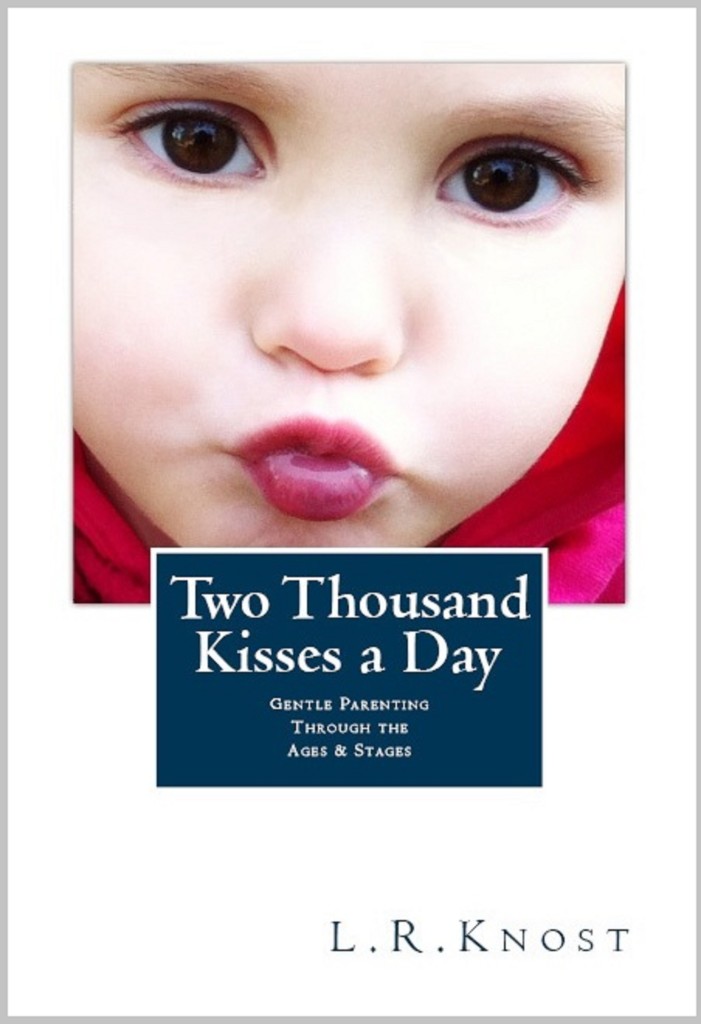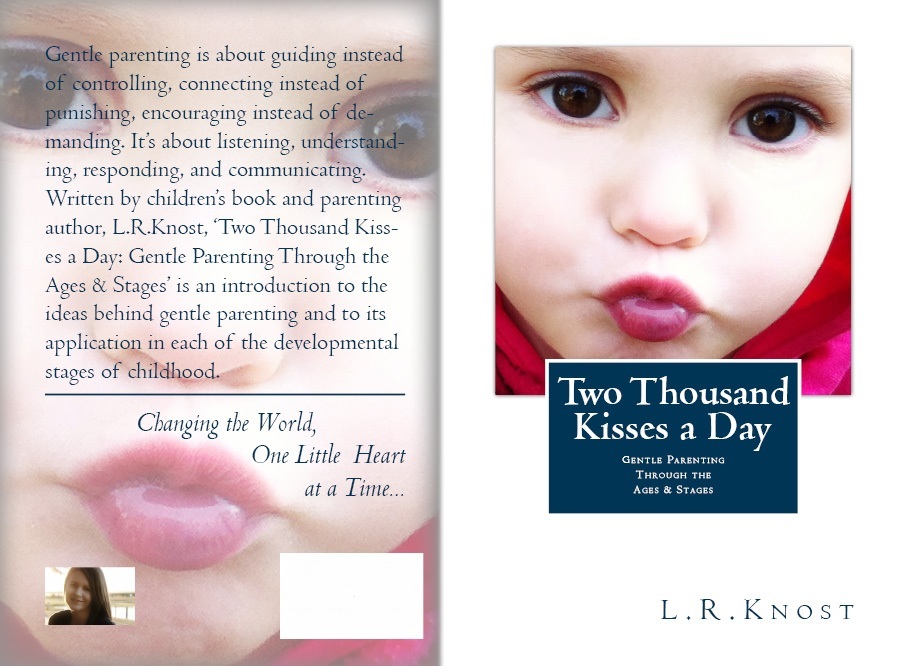’12 Ways to Get Past No’ by Dr. Laura Markham – Friends of L.R.Knost Rock the Guest Posts while She Battles Cancer
“2 year-olds argue with their parents 20 to 25 times an hour.” — Study reported in Child Development Magazine
Between 11 and 15 months, we learn a wonderful word: “No!”
 It’s an ecstatic discovery. We learn we are separate, autonomous beings with a will of our own who can impact what happens in the world. We delight in saying, “No!” at every opportunity.
It’s an ecstatic discovery. We learn we are separate, autonomous beings with a will of our own who can impact what happens in the world. We delight in saying, “No!” at every opportunity.
Our “No” is actually a big “YES!”
It’s an awesome, pure expression of our life force.
After the first cute “No” or two, our parents are usually less than delighted. In fact, this developmental stage launches what’s often called the “terrible twos.” Rarely are our ecstatic expressions of primal life force affirmed. Do you remember your father or mother saying:
“I love your independence and autonomy!”
“I see that you’re learning to stand up for your own truth, which will really help you later in life.”
More common messages are along the lines of:
“Don’t you dare talk back to me!”
“We’ll nip this in the bud!”
There may be the threat—or the reality—of punishment or physical force. There is almost always the withdrawal of love, as parents walk away when little ones tantrum–the only way they know to make their No heard.
Being powerless and utterly dependent, we soon learn to hide our No’s. We begin to resort to whining, passive resistance, and manipulation. By the time we reach adulthood, we’ve often lost touch with our own needs.
So when our little one falls in love with the word NO, danger signs flash inside us. We know that NO is dangerous, even if we don’t know why. We think we MUST teach him who’s in charge, right away. Defiance from our child, whether two or twelve, is met with an emotional slap-down as we put him in his place.
The problem is that defiance is a sign that your child is having a problem. When we just rush in with an iron fist, we don’t address the real issue. Which might be that she feels you aren’t listening. Or that she needs your help to cry. Or that she needs you to teach her how to express her needs and wants without attacking the other person. Or maybe she feels she’s sticking up for her integrity.
If she’s a tween or teen, that should make you rejoice. Research shows that teens who are willing to stand up to their parents are also more likely to stand up to their peers. (After all, she could just lie to avoid a confrontation, which is what most teens do.) And kids who can stand up for their own truth start as toddlers.
So even though you get triggered, this isn’t about who is in charge. Your child knows you’re in charge. This is about your child’s right to his feelings, even while you honor your responsibility to keep him safe and healthy.
It IS possible to say “No” in a way that honors your own truth, while still staying in positive contact with your child. It IS possible to honor both your needs and your child’s age-appropriate need to assert herself. The secret?
1. Stop seeing your child’s NO as something you need to overcome. Instead, see it as a YES offering in a duet dance of negotiation. Every dance is a chance to partner with your child, and that foundation of partnership will create more joy — not to mention better behavior–in the years ahead.
2. Don’t take it personally. Your child is allowed to have a different view than yours. Her willingness to be different is a strength you want to nurture.
3. Listen to your child’s No. “You’re saying NO, No bath! I hear you!” Sometimes being heard is all our child needs. And the more your child feels seen, heard and acknowledged, the less he’ll need to get your attention by being contrary.
4. Listen to the YES behind the NO. “You love playing with the toy horse; you don’t want to stop for a bath, right? That’s okay, you can keep right on playing with the horses… Let’s gallop them into the bathroom! They’re all dusty from riding all day!”
5. Sidestep the NO! by making your request an invitation to play. The secret to smooth transitions is using yourself as the bridge, and no child can refuse your invitation to play. “Climb on my back, Cowboy, we’re headed for the bathtub in the hills!”
6. Sidestep the NO! by giving your child a choice. Win-win solutions mean you both get what you need. “NO bath? Maybe you and the horses need to be hosed down in the kitchen sink?” Who cares where he gets clean?
7. Sidestep the NO! by honoring his autonomy without giving up your request. “NO Bath right now? Ok, Sweetie. We’ll wait five minutes. Then you may look at the plastic containers in the kitchen and be in charge of which ones you want to play with in the tub.” Telling your child he “may” do something is magic. You won’t be able to restrain him from the bath.
8. Join the No. In a joking voice: “Whatever you do, DON’T get in the bathtub. NO, NO, NO, don’t turn on the water!! NO, NO, NO, don’t take off your clothes!!”
9. Honor the autonomy under the NO.”Want to be in charge of turning on the water and deciding what toys go in the bath? Who should take your clothes off?”
10. Teach your child to express his needs without attacking you. “You sound worried…Oh, you’re worried about that song about the child who goes down the bathtub drain? Don’t worry, you can be in charge of the plug. We won’t pull it out until you’re out of the tub, and then you can watch the water go down. You’ll see that only water can fit.”
11. Just say YES! Match the exuberance of your YES! to your child’s No. Trust yourself to find a way to make both you and your child happy by responding to her No with all the Yes energy you can summon. “YES, it’s time for your bath, and YES you can bring your horses, and YES you can ride on my back up the stairs on my back up the stairs, and YES I love you so much and YES, LET”S GO!” Your child will match your generosity of spirit.
12. Honor the disappointment when you can’t agree with the No. When you need to put your foot down, you can say your No with empathy and compassion for your child. “I’m sorry, Sweetie, it’s time. That makes you sad, I see. You wish you could play more. I bet when you grow up you’ll play all night, every night, won’t you?” (That will get a yes!)
These examples are all from the toddler years, but if you start off raising your child this way, you’ll raise a tween and teen who can stand firm in his own integrity while he respects yours.
Remember that you can always find a way to meet both your needs. If you keep your sense of humor, and honor both your own NO and your child’s, you can always find a way to get past the word NO — to the YES! energy right behind it.
Dr. Laura Markham is the author of Peaceful Parent, Happy Kids: How To Stop Yelling and Start Connecting. You can get her free coaching posts right in your In Box at AhaParenting.com.
Related posts:
- ‘5 Keys to Setting Limits that Minimize Tantrums and Meltdowns’ by Amy Bryant – Friends of L.R.Knost Rock the Guest Posts while She Battles Cancer
- ‘What I Believe He Will Believe’ by Abby Theuring, MSW – Friends of L.R.Knost Rock the Guest Posts while She Battles Cancer
- My Cancer Story, Part 1: The Diagnosis
 Award-winnning author, L.R.Knost, is the founder and director of the children's rights advocacy and family consulting group, Little Hearts/Gentle Parenting Resources, and Editor-in-Chief of Holistic Parenting Magazine. Books by L.R.Knost include Whispers Through Time: Communication Through the Ages and Stages of Childhood ; Two Thousand Kisses a Day: Gentle Parenting Through the Ages and Stages ; The Gentle Parent: Positive, Practical, Effective Discipline ; and Jesus, the Gentle Parent: Gentle Christian Parenting the first four books in the Little Hearts Handbook gentle parenting series, and children’s picture books Petey’s Listening Ears and the soon-to-be-released Grumpykins series.
Award-winnning author, L.R.Knost, is the founder and director of the children's rights advocacy and family consulting group, Little Hearts/Gentle Parenting Resources, and Editor-in-Chief of Holistic Parenting Magazine. Books by L.R.Knost include Whispers Through Time: Communication Through the Ages and Stages of Childhood ; Two Thousand Kisses a Day: Gentle Parenting Through the Ages and Stages ; The Gentle Parent: Positive, Practical, Effective Discipline ; and Jesus, the Gentle Parent: Gentle Christian Parenting the first four books in the Little Hearts Handbook gentle parenting series, and children’s picture books Petey’s Listening Ears and the soon-to-be-released Grumpykins series.
Tattered Tapestries: Weaving Trust Through the Chaos
[Reprinted from Jesus, the Gentle Parent: Gentle Christian Parenting by L.R.Knost. Two Thousand Kisses a Day: Gentle Parenting Through the Ages and Stages; Whispers Through Time: Communication Through the Ages and Stages of Childhood; and The Gentle Parent: Positive, Practical, Effective Discipline by L.R.Knost also available on Amazon and through other major retailers.]
“For I know the plans I have for you,” declares the Lord, “plans to prosper you and not to harm you, plans to give you hope and a future.”
Jeremiah 29:11~~~~~~~
 The old preacher’s slightly shaky voice and once-hearty arthritic hands spoke of life and experience and hard-won wisdom as he held up a dusty tapestry with the back facing us. The tangle of threads that seemed to go nowhere and the snarl of multicolored knots gave no hint of the picture on the other side. “This is what we see,” he said. Then he turned the tapestry around to display the intricate, painstakingly crafted, exquisite picture on the front side. “And this is what God is doing.” He looked around the room, a kind and gentle understanding in his age-dimmed gaze. “Faith is trusting that your Father’s hands are carefully weaving a beautiful life’s story, even when all you can see is chaos.”
The old preacher’s slightly shaky voice and once-hearty arthritic hands spoke of life and experience and hard-won wisdom as he held up a dusty tapestry with the back facing us. The tangle of threads that seemed to go nowhere and the snarl of multicolored knots gave no hint of the picture on the other side. “This is what we see,” he said. Then he turned the tapestry around to display the intricate, painstakingly crafted, exquisite picture on the front side. “And this is what God is doing.” He looked around the room, a kind and gentle understanding in his age-dimmed gaze. “Faith is trusting that your Father’s hands are carefully weaving a beautiful life’s story, even when all you can see is chaos.”
I remember this story often when life feels overwhelming, when big things like layoffs and sicknesses hit, and when small things like cranky toddlers, piles of laundry, and broken refrigerators annoy. What feels to me like an endless cycle of dishes and diapers, punctuated by the odd disaster, must look like brilliant threads of golden perseverance, scarlet sacrifice, and soft blue-grey shades of faith, all woven tenderly into my life’s tapestry by my Father’s skillful hands.
I imagine life feels this way to my children, as well. They may not see the picture I am trying to weave as I teach and guide and nourish and encourage them to grow into the beautiful humans they were created to be.
They may not understand why they’re gently redirected when they try to crawl up the stairs or why bugs don’t make a good afternoon snack. They may not be able to fathom why their new dragonfly ‘pet’ can’t live in the house or why they can’t hide in “the best hiding place EVER” in a hot car on a steamy Florida afternoon. They may not be entirely thrilled with the agreement on no laptops in their rooms or no cell phone in their tween years, and they may not fully get why the mall is not a safe hangout spot and why periodic texts to check in when out with friends are part of our family dynamic in their teen years.
As my children grow old enough to participate in the decision making, though, we share our thoughts about these things, discuss them together, and come up with mutually agreed upon boundaries. While these things may seem like meaningless threads or even unnecessary knots and tangles in their lives, the trust that we share helps them to accept and cooperate with what they may not fully understand, knowing that I have a purpose for each of these things even if they can’t see it.
It is that trust, that faith in my motives, my wisdom, my love, that makes gentle parenting possible. I don’t have to ‘lay down the law’ or enforce ‘rules’ with punishments or ‘control’ my children with threats or intimidation because they know that I have their best interests at heart and that I will always, always listen to their concerns, even if I can’t change things or give them what they want.
I start building that trust from the moment my children are born and continue building it throughout their childhood. I respond quickly, consistently, and with empathy to their cries or whines or troubles whether they are eight days, eight years, or eighteen years old. I meet their needs as fully as I am able, whether those needs are a clean diaper, a full belly, a listening ear, or a warm hug. I try to always respond gently and thoughtfully to their behaviors, whether they are having a meltdown, whining, tattling, questioning, or even challenging me.
And, perhaps most importantly, I’m honest about my own imperfections. I’m willing to apologize when I make one of my many human parenting mistakes, and I don’t expect perfection from my equally human children.
Motherhood is very simple to me. It’s a gift to me, but it’s not about me. I’m the one who chose to bring these little people into the world, so the pervading belief in our modern culture that somehow they have the responsibility to fit into my life, and work around my schedule, and not disrupt my pursuits completely mystifies me. They aren’t interlopers; they are guests, invited guests. And how do we treat our guests? Do we ignore their needs or make incomprehensible demands on them or ridicule, name-call, and hit them when they misstep? Of course not. We welcome our guests with special dinners, make accommodations for their needs, and forgive their lack of knowledge of our ways. And our children deserve no less. In fact, they deserve much more.
In our home, when our newest little invited guests arrive, they are welcomed with open arms that are always available, day or night. They are provided nature’s best provision for their nutritional needs. And they are gently guided by example and lovingly encouraged to become a part of a healthy family dynamic. In short, when I invite these little people into my life, it stops being my life, and it becomes our lives.
Parenthood is, very simply, a beautiful sacrifice that mothers and fathers willingly and lovingly live for their 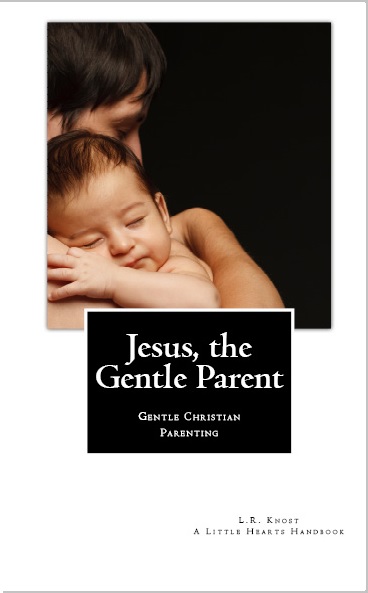 children, day after day, night after night, as a reflection of the sacrifice Jesus made for his children on the Cross. Parenthood is a lovely, lively retelling of the Cross played out in the arms of mamas and daddies, again and again and again.
children, day after day, night after night, as a reflection of the sacrifice Jesus made for his children on the Cross. Parenthood is a lovely, lively retelling of the Cross played out in the arms of mamas and daddies, again and again and again.
Consider the young mother who gives up night after night of sleep to soothe her little one’s cries, or the middle aged man who still gets up before dawn each day to provide for his family, or the elderly parents who give up the peace of their golden years to welcome the child of their youth back into their home when life hits hard. This laying down of self, this giving up of comforts and rights and dreams, these are losses, sacrifices, even hardships, but they are lovely, beautiful beyond belief. Their loveliness lies in the soft warmth of a sleepy baby with a full belly and a trusting heart. Their beauty lies in the joyful chaos of a messy, noisy, welcoming family to come home to each night. Their beauty lies in the spark of hope in the tear-filled eyes of a weary adult whose life has turned dark, but who finds that home is still a safe refuge.
My children, all six of them, are precious gifts straight from God’s heart to my home. I have had other precious gifts, babies whom God gave for a time to fill my womb, but who weren’t meant to fill my arms, and one He gave to fill my arms for a just a moment in time, but who wasn’t meant to stay. My stillborn son, Sammy’s, birthday is in just a few weeks. While he’s always in my heart, as his birthday approaches my heart tightens in my chest a bit more each day until the ache becomes almost unbearable, and then finally the day comes and goes and I can breathe again.
These times always make me wonder how tragedy must look from Heaven’s side. I wonder about my Sammy, and I wonder about my other lost babies, gone before they even had birthdays. What colors did they add to my story? What eternal beauty did they bring that would have made my tapestry incomplete if they had not come and gone, so heartbreakingly briefly, into my life? While I feel holes in my heart, one for each much-wanted child, and an aching cavern of loss for my Sammy, would my life have been complete without them?
I can’t answer these questions. I won’t even try. But I imagine that is where faith stretches its silken blue-grey threads across my story like the fragile gossamer wings of a butterfly. Each one of them brought with them the unique knowledge of how breathtakingly exquisite every living, breathing child is and how priceless and fragile and brief life itself can be. I do not take this knowledge lightly. I have learned to treasure the moments of life with my children. I’ve learned that it’s not about me; it’s about us. And I’ve learned that sacrifice lights up the dark places in the world, making it a more beautiful place for all of us to live.
Life is messy. No one has all the answers, at least not earth-side. But we can all trust that this sometimes bewildering, sometimes joyful, sometimes flat-out painful chaos called life has meaning and purpose and beauty beyond the scope of human sight. And as we carefully and gently weave the strands of our children’s days into a beautiful childhood, we can trust that our Father is thoughtfully and tenderly doing the same for us.
“Now we see through a glass darkly; then we shall see clearly, face to face. Now I know in part, then I shall know fully, even as I am fully known.” 1 Corinthians 13:12
Related posts:
Fear Doesn’t Lead to Faith: Becoming Your Child’s Safe Place
Spare the Rod: The Heart of the Matter
Practical, Gentle, Effective Discipline
Bridge Over Troubled Waters~Parenting a ‘Problem’ Child
200 Ways to Bless Your Children with a Happy Childhood
Jesus, the Gentle Parent: Gentle Christian Parenting
 Award-winnning author, L.R.Knost, is the founder and director of the children's rights advocacy and family consulting group, Little Hearts/Gentle Parenting Resources, and Editor-in-Chief of Holistic Parenting Magazine. Books by L.R.Knost include Whispers Through Time: Communication Through the Ages and Stages of Childhood ; Two Thousand Kisses a Day: Gentle Parenting Through the Ages and Stages ; The Gentle Parent: Positive, Practical, Effective Discipline ; and Jesus, the Gentle Parent: Gentle Christian Parenting the first four books in the Little Hearts Handbook gentle parenting series, and children’s picture books Petey’s Listening Ears and the soon-to-be-released Grumpykins series.
Award-winnning author, L.R.Knost, is the founder and director of the children's rights advocacy and family consulting group, Little Hearts/Gentle Parenting Resources, and Editor-in-Chief of Holistic Parenting Magazine. Books by L.R.Knost include Whispers Through Time: Communication Through the Ages and Stages of Childhood ; Two Thousand Kisses a Day: Gentle Parenting Through the Ages and Stages ; The Gentle Parent: Positive, Practical, Effective Discipline ; and Jesus, the Gentle Parent: Gentle Christian Parenting the first four books in the Little Hearts Handbook gentle parenting series, and children’s picture books Petey’s Listening Ears and the soon-to-be-released Grumpykins series.
When Toddlers Become Teens
[Portions reprinted from Whispers Through Time: Communication Through the Ages and Stages of Childhood by L.R.Knost. Two Thousand Kisses a Day: Gentle Parenting Through the Ages and Stages and The Gentle Parent: Positive, Practical, Effective Discipline also available on Amazon and through other major retailers.]
~~~~~~~~~~~~~~~~~~~~~
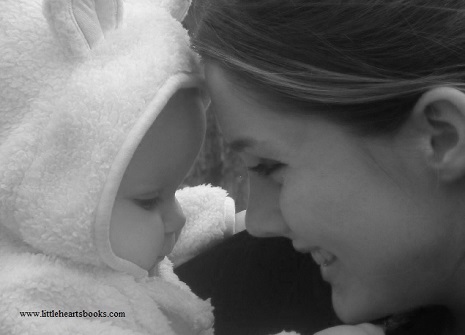 With society’s propensity for blaming social issues on ‘kids these days,’ and with struggling, frustrated parents seeking support by sharing stories of their teens’ attitudes and ingratitudes, it’s not surprising that adolescence gets a bad rap.
With society’s propensity for blaming social issues on ‘kids these days,’ and with struggling, frustrated parents seeking support by sharing stories of their teens’ attitudes and ingratitudes, it’s not surprising that adolescence gets a bad rap.
But the truth is that teens are just people like the rest of us, subject to human imperfections and simply trying to find their place in the world. They may have some hormonal ups and downs, but just as women don’t appreciate being grouped together and defined by exaggerated stories of PMS and men don’t like every decision they make in middle-age to be labeled evidence of a midlife crisis, teens don’t deserve that kind of disrespectful stereotyping, either.
The thing is, adolescent behaviors that parents fear most such as rebellion, drug use, eating disorders, etc. don’t just appear out of nowhere. Teens don’t grow up in a vacuum. Our early parenting choices matter far more than we can imagine in those first months and years of our children’s lives. Our early parenting not only shapes who our children will become, but also has a powerful impact on our relationship with our teens. We are, literally, building our relationship with our teens while we’re parenting our toddlers and preschoolers.
Ideally, preparation for the teen years begins in infancy as we spend those first months of our children’s lives laying a foundation of trust. Then, in the toddler years, that preparation continues as we establish safe and reasonable boundaries with gentle guidance, patience, and proactive parenting like planning shopping trips around naps and bringing along snacks and favorite toys to avoid tantrum triggers.
In the preschool and middle years, preparation for adolescence builds on the trust foundation we laid in the first months and years of our teen’s lives as we grow a spirit of cooperation rather than compulsory compliance, establish a healthy relationship with our children based on teamwork instead of a dictatorship based on forced obedience, and create strong lines of communication rooted in hearing and being heard rather than the often-closed hearts and minds that result from lectures and control-based parenting.
The result…
- Children who don’t have to fight for independence because they don’t have anything to rebel against or any motivation for rebellion
- Children who feel that they are respected and that their opinions are heard and valued and therefore don’t have the angst to fuel negative attitudes
- Children who trust and feel trusted and don’t want to lose what they instinctively know is of great value ~ our mutual trust relationship
Thus the groundwork is set for gently parenting through the teen years.
Once we’ve done the groundwork for the teen years, preparation shifts from preparing for adolescence to preparing our adolescents for adulthood. In the day-to-day parenting of teens, preparation means getting them and ourselves ready for their advent into adulthood by intentionally and incrementally handing over the reins of their lives into their inexperienced, but capable hands.
Another aspect of parenting our teens is participation in their lives. In the early years, participation means joining our little ones as they explore the world with mud-splattered walks in the rain and building tilted block towers which tumble and are rebuilt time and again. It means reading bedtime stories and welcoming midnight visitors in our beds and sharing morning tickle-fests and kissing imaginary boo-boos.
In the teen years participation means much the same, only instead of blocks tumbling, it’s plans and hopes and hearts that sometimes tumble into disappointments and need our support and understanding to be rebuilt. It’s midnight visitors who tap softly on our door and ask if we can chat for a bit. It’s shared hugs and cheers and tears and whispers of encouragement. It’s being there, being aware, being in-tune. It’s active, proactive, and intentional parenting.
And, finally, how we interpret our children’s behavior in the early years sets the stage in a very real way for how we will interpret their behavior in adolescence. In the early years, interpretation means that instead of assigning negative ulterior motives to our little ones’ crying, curiosity, outbursts, explorations, tantrums, and other behaviors, we seek to interpret what they are communicating and empathize with and validate their emotions. It means we try to meet the needs behind the behaviors first, opening the door to gentle guidance so that we can equip them with better ways of expressing their needs as they grow and mature.
Interpretation in the teen years means exactly the same. We listen, assume the best, meet needs, listen more, give grace for being human, empathize with and validate emotions, listen and listen some more, and continue to create open hearts and minds through connection and communication so that our gentle guidance can be heard and received and trusted.
Here’s the thing, yes, our teens are human and they will act like the imperfect beings they are at times, just like we all do. But when we’ve grown our little humans in an atmosphere of connection, communication, and cooperation, those imperfect human moments stay exactly that…moments. They don’t explode into rebellion or fester into addictions or plummet into depression because they’ve been punished, suppressed, and ignored. They are simply normal, small moments of life that we work through together before they become big life problems.
If, however, you are new to the idea of gentle parenting and wonder if it’s too late to rebuild and repair your relationship with your children, the answer is, “No.” One of the miracles of human nature is the ability to forgive, heal, and start again. Here are some links to articles with specific suggestions for walking with your children through that process so you can begin your gentle journey in parenting peacefully, kindly, and effectively with your older child:
Backtalk is Communication…LISTEN
The Gift of a Strong-Willed Child
Bridge Over Troubled Waters~Parenting a ‘Problem’ Child
Two Thousand Connection Points a Day: Attachment Parenting Beyond Infancy
 Award-winnning author, L.R.Knost, is the founder and director of the children's rights advocacy and family consulting group, Little Hearts/Gentle Parenting Resources, and Editor-in-Chief of Holistic Parenting Magazine. Books by L.R.Knost include Whispers Through Time: Communication Through the Ages and Stages of Childhood ; Two Thousand Kisses a Day: Gentle Parenting Through the Ages and Stages ; The Gentle Parent: Positive, Practical, Effective Discipline ; and Jesus, the Gentle Parent: Gentle Christian Parenting the first four books in the Little Hearts Handbook gentle parenting series, and children’s picture books Petey’s Listening Ears and the soon-to-be-released Grumpykins series.
Award-winnning author, L.R.Knost, is the founder and director of the children's rights advocacy and family consulting group, Little Hearts/Gentle Parenting Resources, and Editor-in-Chief of Holistic Parenting Magazine. Books by L.R.Knost include Whispers Through Time: Communication Through the Ages and Stages of Childhood ; Two Thousand Kisses a Day: Gentle Parenting Through the Ages and Stages ; The Gentle Parent: Positive, Practical, Effective Discipline ; and Jesus, the Gentle Parent: Gentle Christian Parenting the first four books in the Little Hearts Handbook gentle parenting series, and children’s picture books Petey’s Listening Ears and the soon-to-be-released Grumpykins series.
The Gift of a Strong-Willed Child
[Reprinted from The Gentle Parent: Positive, Practical, Effective Discipline by L.R.Knost. Whispers Through Time: Communication Through the Ages and Stages of Childhood and Two Thousand Kisses a Day: Gentle Parenting Through the Ages and Stages also available on Amazon and through other major retailers.]
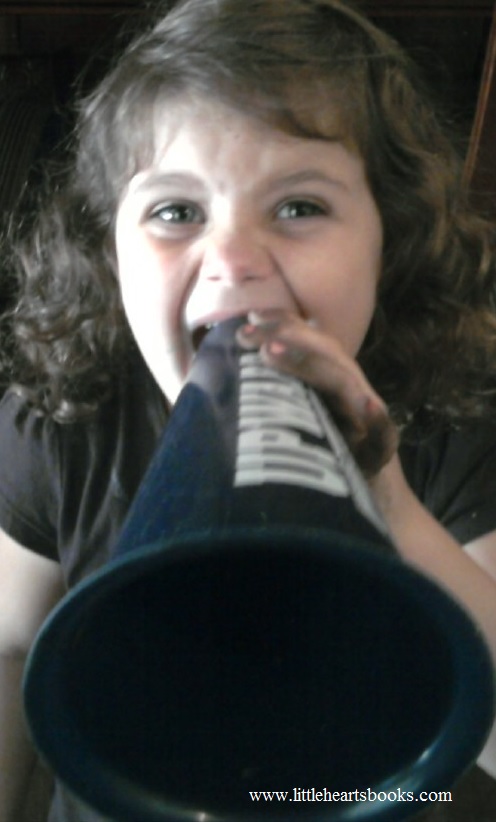 There are some children who are born into the world with the incredible life-gift of a strong will and an indomitable spirit. These children are often deeply misunderstood, and there are rows of books lining bookstore shelves with instructions about how to break their will, how to subdue their spirit, how to force their obedience. What an incredible loss of leadership, passion, and insight this world suffers when parents follow these punitive parenting practices. Not only can we parent these gifted children with gentleness and respect, but the gifts we get in return are priceless!
There are some children who are born into the world with the incredible life-gift of a strong will and an indomitable spirit. These children are often deeply misunderstood, and there are rows of books lining bookstore shelves with instructions about how to break their will, how to subdue their spirit, how to force their obedience. What an incredible loss of leadership, passion, and insight this world suffers when parents follow these punitive parenting practices. Not only can we parent these gifted children with gentleness and respect, but the gifts we get in return are priceless!
Take a look at some of the common descriptions used when referring to the characteristics of a strong-willed child:
Demanding, Insistent, Stubborn, Bossy, Cocky, Difficult, Challenging, Fixated, Contrary, Rebellious, Defiant
Now look at some of the common characteristics of adults who are world leaders, CEO’s, entrepreneurs, innovators, world-class athletes, and the like:
Decisive, Determined, Persistent, Authoritative, Confident, Valiant, Gutsy, Committed, Resourceful, Nonconforming, Bold
Note that the characteristics are the same, but the characterizations are negative when applied to a child and positive when applied to an adult.
Other characteristics of strong-willed children that coincide with the characteristics of adult leaders in their fields are:
- They are typically highly creative and intelligent.
- They are usually passionate and intense in their interests and beliefs.
- They often have an insatiable need to know ‘why.’
- They typically learn by doing.
- They tend to have an intense need to test the status quo.
- They are typically highly perfection-oriented, but often that is focused on their expectations of themselves instead of others.
- They tend to need high levels of validation.
- They usually have an intense need to be heard.
- They often have a strong need for emotional safety.
- They tend to be resistant to change unless they feel like they have some control over the change.
- They are often highly sensitive.
- They are typically intensely focused on their latest project or interest.
- They tend to be conscientious and highly committed.
- They are usually intensely independent.
While there’s no doubt that it’s a challenge having a child who seems to challenge everything, there are ways to work with them rather than against them to preserve and nurture their unique gifts. Maintaining a healthy parent/child relationship is vital as you work to find a balance between setting limits with your richly spirited child while not limiting their freedom to stretch and grow and develop into the person they were created to be.
The key to preserving your trust relationship with your child is remaining calm and present and supportive, even while setting and maintaining reasonable boundaries. It is helpful to remember that the most strong-willed children tend to be the ones who identify the most strongly with their parents. So instead of viewing their seemingly constant challenges as defiance or attempts to thwart authority, work to parent from a place of understanding that your strong-willed child is actually on a discovery mission and is doing endless ‘research’ on you by testing and retesting and digging and chiseling to discover all of your quirks and foibles and ups and downs and strengths and weaknesses. This kind of testing isn’t negative unless you make it into a battle of wills instead of responding with gentle, respectful guidance. Taking this stance will help you to keep from seeing the challenges as personal insults and, instead, see the challenges as attempts to learn and grow and understand.
There is no doubt, though, that parenting a child with the gift of a strong will is a constant exercise in patience and self-regulation. The personal growth you will experience is invaluable as you seek to parent with empathy and wisdom and compassion, but it can be draining and will often stretch you far, far out of your comfort zone. Knowing that and being prepared for it will help you cope with the inevitable stresses, and being ready ahead of time with some specific strategies for handling the challenges will help you to respond calmly and effectively.
This is a good place to revisit the Three C’s of gentle discipline—Connection, Communication, and Cooperation.
Connection ~ Maintaining a secure connection with your spirited child is vital. It is the springboard from which all of your interactions with your child will originate, and it is the touchstone to which you will both return, again and again and again, when your relationship gets strained and stained and stretched.
- Play word games, board games, rough-and-tumble outdoor games, silly face in the mirror games. Play is the language of childhood, so make sure to speak your child’s language every day.
- Laugh together. Humor is an undervalued parenting tool. But it lowers defenses, inspires smiles, brings people together, and reconnects hearts.
- Read storybooks, chapter books, travel brochures, encyclopedias, anything that will inspire you to dream together, talk, plan, get excited, share interests.
- Focus more on who your child is than on what your child does. Remember, you’re growing a person, not fixing a problem. So make sure to spend time getting to know the person, not just the child. It doesn’t have to cost anything. Just walk together, talk together, share ice cream cones, spot shapes in the clouds, and enjoy each other.
Communication ~ Children have their own ‘inner world’ of thoughts and plans and problems and worries and hopes and dreams that are occupying their time and attention, so a lack of cooperation is often simply the result of having a different agenda than we do. Getting some insight into that ‘inner world’ is key in guiding and growing them respectfully.
- Listen with your heart. Listen ‘between the lines’ to what your child is communicating through their behavior. Listen and listen and listen some more. That is always, always the first step in communicating with your child.
- Reflect, connect, and redirect. Reflect what you hear, whether it’s communicated by your child’s behavior or their words. This not only validates their emotions and lets them know that you hear and understand them, but it also helps them to understand their own emotions. For instance, if your child is upset that he can’t have a cookie after brushing his teeth for bedtime, try saying, “I hear you. You’re upset because you want a cookie.” Then reestablish your connection, “I like cookies, too!” and offer a solution, “How about we go pick out the two best cookies and put them in a special container that we can take to the park in the morning?”
- Don’t take non-compliance as a personal insult. A strong-willed child is very much their own person with their own agenda. Focus on inviting cooperation instead of demanding obedience. Whether it’s staying in bed or cleaning up or whatever the issue, make it a team effort and come up with a game plan ahead of time. For example, you could say, “You seem to be having trouble staying in bed at night. What do you think would help you to be more ready to go to sleep when it’s time for bed?” or “It’s important to pick up our things so they don’t get broken, let’s put on the timer and work together for ten minutes and see who gets the most picked up.”
- Make a firm commitment not to resort to punishments to control behavior. The resentment that comes from being punished absolves children in their own minds of responsibility. It doesn’t teach them responsibility, and resentment can actually cause a lot of the behaviors you are trying to avoid.
- Communicate daily, outwardly to your child and inwardly to yourself, the positive aspects of your child’s personality. When the focus is on ‘fixing’ a child, they get the message that they are somehow broken, and that is not a healthy self-image to take into adulthood.
- ‘No’ is not a complete thought. It is an imperative, a command. It doesn’t teach. It tells. If you want your child to learn to think like an adult, take the time to explain your adult thinking.
- Remember that children, especially when they are upset, open ‘conversations’ through their behavior, and it’s up to us, the only adults in the relationship, to gently guide them toward continuing those conversations verbally as well as equipping them with the resources to be able to do so.
- Also keep in mind that the social mores of rudeness simply aren’t inborn and don’t apply to early interactions with our children. They are learned by imitating how we as parents behave. Politeness is a heart issue that cannot be imposed by the will of another unless we want it to only be an external façade instead of a heartfelt courtesy. Helping your strong-willed child learn to speak kindly means speaking kindly to your child as well as offering guidance when they’ve been rude such as saying, “That is not a nice tone of voice” or “That isn’t a kind thing to say” and then offering a do-over “Can you try saying that to me again more nicely? I’ll always try my best to be nice to you, and I would like you to try to do the same for me.” (see Appendix B in The Gentle Parent: Positive, Practical, Effective Discipline for more ideas)
Cooperation ~ Always keep at the forefront of your parenting goals that you are seeking thoughtful cooperation, not mindless compliance. That way you will remember to treat your child as a thoughtful individual with ideas and needs and feelings of their own instead of a mindless drone there to do your bidding.
- Set clear limits and explain them in age-appropriate terms. Remember, if you want to invite cooperation, you have to actually issue the invitation to cooperate!
- Limit the number of limits. Spirited children are often stressed children simply because of their own intense emotions and reactions to things, so set them up for success by keeping your limits few and clear and by maintaining them consistently.
- Make sure to let your child have a voice in determining the limits so they feel like they have some control over their lives and so they feel some ownership over the limits.
- Brainstorm together ways of helping everyone to work together. Some ideas are to come up with hand signals or words that remain your little secret codes to indicate when it’s time to leave the park or to do homework or to dial the activity level or noise volume down a few notches.
- Invite cooperation by creating daily routines together. Don’t be surprised if your child ends up being the one who is a stickler for following the routine, even to the point of nagging you to follow it. These gifted children tend to be all-in, fully focused and committed, and they’ll expect you to be the same!
- Cooperate with your child’s needs and personality by working with them rather than against them. For instance, if you know that your child has a hard time leaving a project, give them plenty of time to find a good stopping point when you need them to leave it for a while. Or if you know that your child has a hard time following directions at bedtime, try writing or drawing the tasks that need to be done (i.e. toothbrushing, pajamas, etc.) on ping-pong balls and put them in a small ‘bedtime jar’ so your child can feel some control over their routine as they independently pick out the balls one by one for a ‘surprise’ nighttime order of tasks or take them all out and decide what order to do them in themselves.
- If you are already locked in a head-to-head power struggle, put away your boxing gloves so your child will (eventually!) feel safe putting away theirs. When you battle with your child, you may win a skirmish or two, but you will lose the treasure…your trust relationship. Putting away the gloves means slowing down, breathing through your own emotions, and finding a way to work through the issue together. Remember, you’re the adult in the relationship, but that doesn’t give you the right to overpower your child; it gives you the responsibility to empower your child. That involves modeling the tools of diplomacy—communication, cooperation, compromise—that you want your child to stock in their own emotional toolkit.
Remember, the children who come into the world with their ‘boxing gloves on’ so to speak are often the ones who become the biggest world changers. It’s not easy raising these little world-changers, I know (Believe me, I know. Two of my six are world-changers-in-the-making!), but the rewards are phenomenal!
Related posts:
Healing Your Hurts So You Don’t Hurt Your Children
Backtalk is Communication…LISTEN
When Children Act Out ~ Reflecting Our Emotions
Bridge Over Troubled Waters~Parenting a ‘Problem’ Child
The Incredible Power of the Whisper
The Taming of the Tantrum: A Toddler’s Perspective
The Thoughtful Parent’s Guide to Positive Parenting Guides
 Award-winnning author, L.R.Knost, is the founder and director of the children's rights advocacy and family consulting group, Little Hearts/Gentle Parenting Resources, and Editor-in-Chief of Holistic Parenting Magazine. Books by L.R.Knost include Whispers Through Time: Communication Through the Ages and Stages of Childhood ; Two Thousand Kisses a Day: Gentle Parenting Through the Ages and Stages ; The Gentle Parent: Positive, Practical, Effective Discipline ; and Jesus, the Gentle Parent: Gentle Christian Parenting the first four books in the Little Hearts Handbook gentle parenting series, and children’s picture books Petey’s Listening Ears and the soon-to-be-released Grumpykins series.
Award-winnning author, L.R.Knost, is the founder and director of the children's rights advocacy and family consulting group, Little Hearts/Gentle Parenting Resources, and Editor-in-Chief of Holistic Parenting Magazine. Books by L.R.Knost include Whispers Through Time: Communication Through the Ages and Stages of Childhood ; Two Thousand Kisses a Day: Gentle Parenting Through the Ages and Stages ; The Gentle Parent: Positive, Practical, Effective Discipline ; and Jesus, the Gentle Parent: Gentle Christian Parenting the first four books in the Little Hearts Handbook gentle parenting series, and children’s picture books Petey’s Listening Ears and the soon-to-be-released Grumpykins series.
‘The Gentle Parent: Positive, Practical, Effective Discipline’
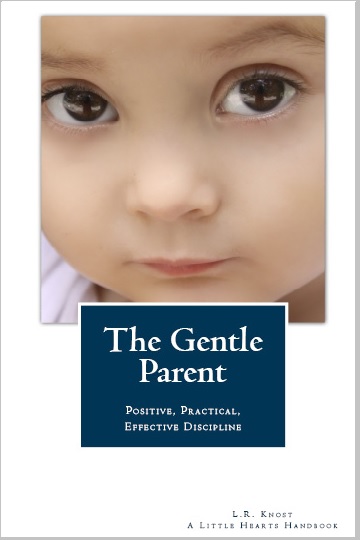 I’m so excited to share the release of The Gentle Parent: Positive, Practical, Effective Discipline, the third book in the Little Hearts Handbook series! The first reviews are in, and The Gentle Parent has already received 5-Star ratings and been called “food for a gentle parent’s soul” and “reassuring, relevant, and relatable for parents with children of all ages.” The Parenting Review shared this about The Gentle Parent:
I’m so excited to share the release of The Gentle Parent: Positive, Practical, Effective Discipline, the third book in the Little Hearts Handbook series! The first reviews are in, and The Gentle Parent has already received 5-Star ratings and been called “food for a gentle parent’s soul” and “reassuring, relevant, and relatable for parents with children of all ages.” The Parenting Review shared this about The Gentle Parent:
“Relaxed, Reassuring, Practical ~ Written by L.R.Knost, best-selling, award-winning author of ‘Two Thousand Kisses a Day’ and ‘Whispers Through Time,’ ‘The Gentle Parent: Positive, Practical, Effective Discipline’ shares the simple secrets of a peaceful, happy home in the Three C’s of gentle discipline–Connection, Communication, and Cooperation. In her signature relaxed and poetic style, L.R.Knost gently guides parents through the steps of applying the Three C’s in real-life scenarios from tantrums to defiance to parenting a strong-willed child to healing a broken parent/child relationship. Practical and proven, this newest installment in the Little Hearts Handbook parenting series will be tucked into diaper bags, kept handy on nightstands, and shared with good friends for its research-backed, experience-based, and humor-rich insights, ideas, and inspiration.”
Here’s a peek at the book trailer:
Back cover copy
Written by best-selling parenting and children’s book author and mother of six, L.R.Knost, ‘The Gentle Parent: Positive, Practical, Effective Discipline’ provides parents with the tools they need to implement the Three C’s of gentle discipline–Connection, Communication, and Cooperation–to create a peaceful home and a healthy parent/child relationship. Presented in bite-sized chapters perfect for busy parents and written in L.R.Knost’s signature conversational style, ‘The Gentle Parent’ is packed with practical suggestions and real-life examples to help parents through the normal ups and downs of gentle discipline on the road to raising a generation of world changers.
Table of Contents
~Introduction
Chapter 1 The Problem with Punishment offers insight on the punishment versus discipline debate.
~A Gentle Beginning
Chapter 2 Foundations: Setting the Stage for Discipline shares how our parenting choices in the first days and weeks and months of our children’s lives affect discipline in later stages.
Chapter 3 Castles in the Air: Building on Trust shows how laying a foundation of trust and building on it day by day, night by night, gentle response by gentle response creates the parent/child relationship essential to gentle discipline.
Chapter 4 Safe Surroundings shares simple ways to use baby proofing as visual boundaries to begin gentle limit-setting.
Chapter 5 Reasonable Expectations offers insight into normal child development and how our expectations affect our parenting.
Chapter 6 The Three C’s of Gentle Discipline presents the basic tools of gentle discipline and their components.
~Toddler Time
Chapter 7 Sandbox Soapbox: Toddler Insights shares parenting insights from a toddler’s perspective.
Chapter 8 Toddlers, Tantrums, and Time-In’s, Oh my! gives specific interventions and preventions for coping with and preventing tantrums.
Chapter 9 When Things Get Physical: Hitting, Kicking, Throwing, and Biting offers tools for working through the physical stage with toddlers and preschoolers.
Chapter 10 Testing the Boundaries shares insights and parenting techniques for guiding children through testing behaviors.
Chapter 11 Parenting in Public provides specific parenting tools for coping with behaviors in public places such as parks, shops, and restaurants.
Chapter 12 Crying Wolf: Don’t Be an Old Yeller! gives insight into the consequences of yelling at children.
Chapter 13 Toxic Parenting: Spanking, Shaming, Threatening, Manipulating contrasts peaceful, connected parenting with punitive, controlling parenting and their outcomes.
Chapter 14 All the ‘Right’ Parenting Moves gives insight into the basic truth that we are imperfect humans raising imperfect humans in an imperfect world and therefore no parenting will produce perfection.
~A Preschooler with a Plan
Chapter 15 Hurting Parents, Hurting Children shares ways parents can heal from their emotional baggage instead of passing that baggage along to the next generation.
Chapter 16 The Gift of a Strong-Willed Child offers parents with the tools to help children gifted with a rich and vibrant spirit blossom while still providing them with guidance and limits.
Chapter 17 You’re Not the Boss of Me redefines defiance to give parents a new perspective and offers insights to help parents work through the more challenging behaviors of childhood.
Chapter 18 A Place for Me shares the value of children having a small space of their own to escape from the stresses and sensory overload that can often spark behavioral issues.
Chapter 19 When Children Act Out: Reflecting Our Emotions provides insight into the often unexpected outbursts that signal a child’s need for help in coping with family issues.
Chapter 20 For Everything There is a Season encourages parents to slow down and recognize the basic truth that children are not small adults and to appreciate the beauty of childhood through the eyes of their children.
~Middle Childhood: Becoming Their Own Person
Chapter 21 Thoughtful Cooperation vs. Thoughtless Compliance offers tools for equipping children with inner guidance systems rather than external controls.
Chapter 22 The Butterfly Effect shares intentional shifts we can make in our parenting choices to change the trajectory of our children’s future.
Chapter 23 The Color of Change provides step-by-step changes parents can make to move from a punitive, control-based parenting style to connected, communication-based parenting.
Chapter 24 Bridge Over Troubled Waters: Parenting a ‘Problem’ Child offers insight into the world of the sensitive child and offers parents the tools to guide and support their sensory-gifted children gently and successfully.
Chapter 25 Raising Problem Solvers shares strategies to help parents provide their children with effective problem-solving tools to take into the future.
~Gentle Parenting: Teens and Beyond
Chapter 26 Children of Violence gives a glimpse into a real-world scenario that children experience every day and offers insight into the root of violence and bullying in our society.
Chapter 27 The Discipline of Choice examines the life lessons learned through a teen’s their own choices and the value of unconditional support from a connected parent.
Chapter 28 Helping Hurting Teens compares and contrasts the results of punitive, control-based parenting on adolescents and offers parents alternatives to punishments.
Chapter 29 Twelve Life Lessons for Daughters and Chapter 30 Twelve Life Lessons for Sons reach out and touch parents’ hearts to reawaken their memories of their own adolescent struggles and esteem issues to help them connect with where their teens are so that they can more empathetically and effectively guide them through the often turbulent adolescent years.
Appendix A
Five Gentle Tools for Handling Lying shares a practical and gentle approach to lying.
Appendix B
Backtalk is Communication – LISTEN tackles the startling truth that when children talk back they are actually communicating.
Appendix C
Twelve Steps to Gentle Parenting: Setting Yourself Up for Success offers a twelve month, step-by-step approach to work toward a more gentle style of parenting.
Sample Chapters
The Gift of a Strong-Willed Child
Bridge Over Troubled Waters~Parenting a ‘Problem’ Child
Book Reviews and Author Interviews
I’m so honored to have these wonderful people and organizations participating in the book tour for The Gentle Parent: Positive, Practical, Effective Discipline. (Links will be added as the tour stops go live!)
The Natural Parent Magazine – Australia
Dr. Laura Markham – Clinical Child Psychologist
Green Child Magazine Holiday Gift Guide
Kidlutions: Solutions for Kids
Synergy: Gentle Parenting Resources ~ South Africa
Susan Heim, author/editor ‘Chicken Soup for the Soul’
Family Review Center
The San Francisco Review
The Peaceful Housewife
Littles Rule the Roost
The Mahogany Way
You can check out more reviews here: The Gentle Parent: Positive, Practical, Effective Discipline
*Note: For those outside the US who would like to purchase books by L.R.Knost without Amazon’s high international shipping costs, a limited supply is available directly from the author here.
Also, *FREE!* to download on Kindle (can be downloaded to your computer, iPhone, or iPad) all day on November 1st and 10th ~ Gentle Parenting Workshop 1: Getting Started on Your Gentle Journey
 Award-winnning author, L.R.Knost, is the founder and director of the children's rights advocacy and family consulting group, Little Hearts/Gentle Parenting Resources, and Editor-in-Chief of Holistic Parenting Magazine. Books by L.R.Knost include Whispers Through Time: Communication Through the Ages and Stages of Childhood ; Two Thousand Kisses a Day: Gentle Parenting Through the Ages and Stages ; The Gentle Parent: Positive, Practical, Effective Discipline ; and Jesus, the Gentle Parent: Gentle Christian Parenting the first four books in the Little Hearts Handbook gentle parenting series, and children’s picture books Petey’s Listening Ears and the soon-to-be-released Grumpykins series.
Award-winnning author, L.R.Knost, is the founder and director of the children's rights advocacy and family consulting group, Little Hearts/Gentle Parenting Resources, and Editor-in-Chief of Holistic Parenting Magazine. Books by L.R.Knost include Whispers Through Time: Communication Through the Ages and Stages of Childhood ; Two Thousand Kisses a Day: Gentle Parenting Through the Ages and Stages ; The Gentle Parent: Positive, Practical, Effective Discipline ; and Jesus, the Gentle Parent: Gentle Christian Parenting the first four books in the Little Hearts Handbook gentle parenting series, and children’s picture books Petey’s Listening Ears and the soon-to-be-released Grumpykins series.
Helping Unique Learners Find Their Genius ♥

[From Raising Bookworms: Life, Learning, and Literacy by L.R.Knost available 2014; Two Thousand Kisses a Day: Gentle Parenting Through the Ages and Stages, Whispers Through Time: Communication Through the Ages and Stages of Childhood, and The Gentle Parent: Positive, Practical, Effective Discipline now available on Amazon]
~~~~~~~~~~~~~~~~~~~~~
 Homeschooling a unique learner can be challenging simply because they don’t get the benefit of access to testing and professional support without a lot of initiative, research, phone calls, and door-knocking on your part. But the trade-off is the freedom to tailor your teaching and learning environment to your child’s needs, and that is of incredible value when educating a unique learner.
Homeschooling a unique learner can be challenging simply because they don’t get the benefit of access to testing and professional support without a lot of initiative, research, phone calls, and door-knocking on your part. But the trade-off is the freedom to tailor your teaching and learning environment to your child’s needs, and that is of incredible value when educating a unique learner.
Albert Einstein said, “Everybody is a genius. But if you judge a fish on its ability to climb a tree, it will live its whole life believing that it is stupid.” Unique learners have beautiful minds just waiting to find their genius. We just need to look outside of the box to help them find it!
Here are some of the tips, tools, and techniques I’ve learned through years of homeschooling my unique learners to help them work through the challenges they face on a daily basis:
1.) Lighten up…Everything in life is easier if you take it with a grain of salt and learn to laugh. Our unique learners will have more struggles and challenges than the average person throughout life, not just during their school years. That is an unavoidable fact. But who wants to be ‘average’ anyway? Help them to celebrate their uniqueness and embrace the future with grace and humor by sharing your own struggles, modeling coping techniques, and being able to laugh at your own mistakes. Make ‘even missteps are valuable steps on the road to success’ your homeschool motto!
2.) Play…Children learn best through play, and that applies to therapy, as well. Experience is the only true path to learning, so let their imaginations soar as they do the hard work of learning to cope with their unique challenges. (See some play-based, brain-enriching, and eye-tracking activities below)
3.) Jazz it up…Music truly is medicine for the soul. Buy a good set of headphones (not earbuds) and play classic instrumentals softly while your unique learner is trying to concentrate, whether it be on reading or writing or drawing, etc. Filtering out the cacophony of life and soothing their stress levels with the gentle strains of Mozart are only some of the benefits of music. Another benefit is that the rhythms, cadence, and timing of music actually have an organizing effect on the brain!
4.) Exercise…Invest in an exercise bicycle (We got ours for $15 from a yard sale!) that lets your unique learner sit in a comfortable seat while pedaling. The cross-over action of pedaling also has an organizing effect on the brain, and, if used while reading or playing video games (Video games can be great exercises for eye-tracking if you choose the right ones!) can actually increase the speed and effectiveness of learning.
unique learner sit in a comfortable seat while pedaling. The cross-over action of pedaling also has an organizing effect on the brain, and, if used while reading or playing video games (Video games can be great exercises for eye-tracking if you choose the right ones!) can actually increase the speed and effectiveness of learning.
5.) Get crunchy…Believe it or not, another ‘brain organizing’ activity is chewing, particularly crunchy foods, while reading, etc. Some good choices are pretzels, carrot sticks, celery, granola, and nuts. (If you’ve got a sensory sweetie like I do, be careful to let them choose something that won’t send their senses into overdrive.) Sugarless chewing gum can be substituted when you go places where foods aren’t appropriate, but still would like to offer your child a calming, organizing aid.
6.) Listen, listen, listen…Your unique learner will have more than their share of stress and possibly a harder time articulating it than others might. Slow down and really focus on what they are communicating. Listen ‘between the lines’ to their heart, their hurts, their fears, their needs. Be their safe place, their source of comfort and renewal.
7.) Hug it out…Physical closeness is healing, and so make sure that along with the extra struggles and challenges your unique learner faces, they get lots of extra cuddles, snuggles, and hugs. When they get older, a gentle touch on their shoulder or a light hand on their arm will be instantly calming and comforting because it will tap into those feelings of comfort and closeness from earlier childhood.
8.) Watch and learn…Just as every child is different, every child with challenges is unique in how they manifest those challenges and how they handle them. Paying careful attention to your own unique learner’s personality, struggles, aversions, triggers, etc. will give you clues as to how to help them learn to cope. With SPD (Sensory Processing Disorder), for example, avoiding unpleasant stimulus and providing needed stimulus is the name of the game. Typically, you’ll want to provide a quiet learning area at home, lots of freedom to move, permission to step away and de-stress when they feel overwhelmed, etc. and, when going out, avoid buffet-style restaurants and loud, crowded shopping and entertainment venues.
9.) Guide them gently…Discipline (guiding, modeling, teaching, etc.) invites communication and strengthens your parent/child connection. Punishment stifles communication and strains parent/child connections. Keep those vital lines of communication open and your parent/child connection healthy by providing consistent boundaries and gentle guidance, being open to discussion, and modeling the desired behavior.
10.) Read, read, read…Successful readers are not simply those who understand the mechanics of reading any more than successful biking is understanding the mechanics of a bicycle. Readers are born when a love for reading is fostered. Let them see you reading often. Cuddle up and read to them when they are young. Co-read (you read a sentence, they read a sentence, etc) when they are new readers or when they are tired or struggling. Let them read comics (The relation of pictures to words is a huge aid in reading comprehension.). For more reading tips, see Raising Bookworms.
Here are some exercises and activities that have helped my Renaissance Girl with her challenges with SPD, dyslexia, ADD, visual/auditory processing disorders, dyscalculia, etc:
Gross motor and fine motor cross-over exercises to get the two sides of the brain communicating more efficiently…
~Bouncing a brightly colored ball back and forth between us using alternate hands (left, right, left, right, etc.)
~Skipping, marching, swinging while singing 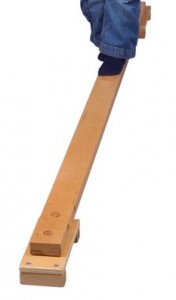
~Climbing
~Balance beam
~Bicycling
~Piano
~Sorting 
Brain-organizing activities…
~Memory matching
~Tonal music
~Free-style building with blocks, Tinker Toys, Legos, etc.
~Design-matching building
~Sensory bins
Eye-tracking activities…
~Laser pointer games-following a laser pointer light in a darkened room, pointing to moving targets (i.e. bubbles), etc.
~Ceiling tracing-following the seam of the wall and ceiling from corner to corner moving only the eyes
~Video games-Flash Focus and Brain Age are good choices for the Gameboy. Wii Fit, Carnival Games, and Sports Games are good for the Wii. There are also great games for improving eye-tracking for the X-box, Playstation, and online. If you do the research to find what best fits your child’s interests, you’ll have much better participation!
Visual-motor learning…
~Clay letters-tactile learning by forming letters and words on a template with clay or dough 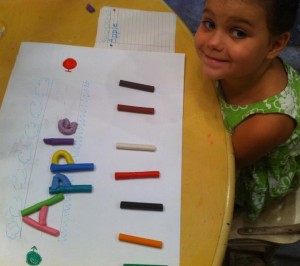
~Contextual learning-Children with dyslexia tend to learn better in context than by breaking things down to their parts, so phonics-based learning is often mind-boggling for them. Flashcards are a no-go because speed and movement impede their attempts to focus rather than help them. Writing-based learning such as copying and illustrating short poems, copying a short sentence from a wall-mounted chalkboard or large paper taped to the wall and illustrating it, writing and illustrating their own stories, and writing stories on the computer are great ways to help them learn to read.
~Once they are beginning to read, graphic novels, large-print chapter books on topics that interest them, and continued creative writing are excellent practice.
~Online reading games can be helpful, but only if they are untimed (Timed anything is a huge stressor and sets them up for frustration and failure.) and your child feels comfortable with the level of activity and brightness on the screen as otherwise these can cause headaches and their eyes to tire quickly.
These tips are not, of course, exhaustive or a replacement for professional therapies. But as you work your way through what can often be a labyrinth of paperwork, meetings, appointments, etc. on your way to finding the services your child needs, these may help to ease the wait a bit. 🙂
Related posts:
Children who love to read…READ! Engaging children’s hearts in the wonder of reading instead of just training their minds in its mechanics. Raising Bookworms
It’s time for a return to childhood, to simplicity, to running and climbing and laughing in the sunshine, to experiencing happiness instead of being trained for a lifetime of pursuing happiness…it’s time to let children be children again. A Return to Childhood
Think homeschooled children are unsocialized, over-controlled, locked-away-from-the-world misfits? Think again! My Renaissance Girl
Successful reading means far more than possessing the ability to read. Engaging the hearts of students moves reading success beyond a life skill and turns it into a life style. And graphic novels are too powerful of a tool in our arsenal to be disregarded because of pride or prejudice. Raising Super Readers~The MARVELous Power of Comic Books!
In the world of a child wonders are as simple as sticks and sheets, leaves and books, boxes and giggles, and the promise in a rainy day. The Seven Wonders of the World of Childhood
Parenting choices strongly impact the level and type of attachment a child develops and, by extension, the development of a love of learning. A love of learning grows when it isn’t stifled by fear or stress or regimented by over-structuring or a focus on achievement or competition. Parents fostering a healthy attachment are thus also fostering a life-long love of learning in their children. Live to Play~Play to Learn~Learn to Live!
If you give a toddler a book
He’ll climb into your lap
While he’s in your lap
He might lay his head on your chest
When he lays his head on your chest
He’ll hear your heartbeat
When he hears your heartbeat
He’ll probably ask if you can hear… If You Give A Toddler A Book…
Einstein recognized his unique lens and often commented about it and about how organized education systems didn’t accommodate individuality and creativity. Here is a look into this ‘unique learner’s’ mind in his own words…Beautiful Minds
 Award-winnning author, L.R.Knost, is the founder and director of the children's rights advocacy and family consulting group, Little Hearts/Gentle Parenting Resources, and Editor-in-Chief of Holistic Parenting Magazine. Books by L.R.Knost include Whispers Through Time: Communication Through the Ages and Stages of Childhood ; Two Thousand Kisses a Day: Gentle Parenting Through the Ages and Stages ; The Gentle Parent: Positive, Practical, Effective Discipline ; and Jesus, the Gentle Parent: Gentle Christian Parenting the first four books in the Little Hearts Handbook gentle parenting series, and children’s picture books Petey’s Listening Ears and the soon-to-be-released Grumpykins series.
Award-winnning author, L.R.Knost, is the founder and director of the children's rights advocacy and family consulting group, Little Hearts/Gentle Parenting Resources, and Editor-in-Chief of Holistic Parenting Magazine. Books by L.R.Knost include Whispers Through Time: Communication Through the Ages and Stages of Childhood ; Two Thousand Kisses a Day: Gentle Parenting Through the Ages and Stages ; The Gentle Parent: Positive, Practical, Effective Discipline ; and Jesus, the Gentle Parent: Gentle Christian Parenting the first four books in the Little Hearts Handbook gentle parenting series, and children’s picture books Petey’s Listening Ears and the soon-to-be-released Grumpykins series.
Bridge Over Troubled Waters~Parenting a ‘Problem’ Child
[Portions reprinted from The Gentle Parent: Positive, Practical, Effective Discipline by L.R.Knost. Two Thousand Kisses a Day: Gentle Parenting Through the Ages and Stages and Whispers Through Time: Communication Through the Ages and Stages of Childhood also available on Amazon and through other major retailers.]

We all have times when we struggle, when life gets hard, when stresses overtake us and the constant demands to grow and change and learn inherent in simply being human just feel like too much to bear.
Children are no different than adults in that they, too, can often feel overwhelmed by life. The sheer volume of growth and change and learning integral to childhood inevitably produce stress, though that isn’t necessarily a negative for all children. Some children, just like some adults, seem to have an innate ability to cope with stress, to adapt to change, and to face and conquer challenges. Some personalities even thrive on it!
But then there are those children who simply seem to struggle with life. Growth spurts cause incredible stress and discomfort. Change produces intense anxiety and resistance. And learning, being introduced to new thoughts and ideas, being stretched and challenged, inspires unease and distress.
These children are often labeled problem children, strong-willed, difficult, entitled, or brats. The reality, though, is that these are often the most sensitive children, small people who were created to be intimately in-tune with their bodies, their environment, and their fellow human beings. They feel, deeply and empathetically, other people’s pain and distress. They endure shifts in their surroundings like frontal assaults to their safety and security. They experience touch and movement of their bodies, and growth within their bodies, with painful intensity.
All too often, these sensationally gifted children are misunderstood. Their strong reactions to stimuli are misinterpreted as willfulness and stubbornness. They are punished instead of helped, controlled instead of supported, hurt instead of heard. Their uniqueness, gifts, and insights are forced underground where they often simmer in silence, bursting forth in flashes of rage or turning inward in brooding depression.
These children don’t need labels. They don’t need to be contained or controlled. They need what all children need…love, understanding, and guidance to grow into the gifted, unique individuals they were created to be.
Helping and supporting your sensitive child who is struggling is like building a bridge over troubled waters using the Three C’s of gentle discipline:
Connect:
- Observe and really get to know, understand, and appreciate the gifts and needs of the unique little person you are privileged to parent.
- Build a foundation of trust and respect in your parent/child relationship by ‘listening’ to the needs being expressed by your child’s behavior even when their behavior seems completely out of proportion to the situation.
Communicate:
- Keep an open door policy, particularly in the late evening hours when the house is quiet and everyone else is settled for the night. Sensitive children often need stillness to feel safe enough to begin processing all of the overwhelming stimuli and emotions they experience throughout the day.
- Help them to verbalize their feelings and experiences by listening to their hearts and not just their words, and quietly offering observations to help them to put things into perspective.
Cooperate:
- Work with your sensitive child to help them find coping mechanisms that will help them deal with overwhelming sensations, emotions, and situations. Some ideas are to offer them options such as…
- wearing noise-cancelling headphones to block out extraneous noises
- escaping to a Cozy Cave to take a break from the stresses of daily life
- creating a private code word that they can use to let you know they are feeling overwhelmed or that you can use to alert them that they may need to take a break or to dial things down a notch or two
- Equip them with tools to express themselves in acceptable ways (i.e. “It’s not okay to be rude, but it is okay to tell someone you need a break” or “It’s not okay to run away at school, but it is okay to go to your teacher and tell them you’re having a hard time.”)
- Work with them intentionally on a daily basis to overcome the stresses and minimize the impacts of what is, to us, normal daily life, but to them can be deeply troubling experiences.
Building a strong, supportive bridge into the future with your sensitive child will provide them with the coping skills they’ll need as adults to overcome normal stresses and challenges as well as those that come when life inevitably flows into troubled and turbulent waters.
For more tips for parenting your sensitive child and helping them learn coping mechanisms to deal with stresses, see The Gentle Parent: Positive, Practical, Effective Discipline.
Related posts:
Backtalk is Communication…LISTEN
The Gift of a Strong-Willed Child
When Children Act Out ~ Reflecting Our Emotions
The Incredible Power of the Whisper
The Taming of the Tantrum: A Toddler’s Perspective
The Thoughtful Parent’s Guide to Positive Parenting Guides
Simon and Garfunkel – Bridge Over Troubled Water Studio Version
When you’re weary, feeling small
When tears are in your eyes
I will dry them allI’m on your side
When times get rough
And friends just can’t be foundLike a bridge over troubled water
I will lay me down
Like a bridge over troubled water
I will lay me downWhen you’re down and out
When you’re on the street
When evening falls so hard,
I will comfort youI’ll take your part
When darkness comes
And pain is all aroundLike a bridge over troubled water
I will lay me down
Like a bridge over troubled water
I will lay me downOh, if you need a friend
I’m sailing right behindLike a bridge over troubled water
I will ease your mind
Like a bridge over troubled water
I will ease your mind…
 Award-winnning author, L.R.Knost, is the founder and director of the children's rights advocacy and family consulting group, Little Hearts/Gentle Parenting Resources, and Editor-in-Chief of Holistic Parenting Magazine. Books by L.R.Knost include Whispers Through Time: Communication Through the Ages and Stages of Childhood ; Two Thousand Kisses a Day: Gentle Parenting Through the Ages and Stages ; The Gentle Parent: Positive, Practical, Effective Discipline ; and Jesus, the Gentle Parent: Gentle Christian Parenting the first four books in the Little Hearts Handbook gentle parenting series, and children’s picture books Petey’s Listening Ears and the soon-to-be-released Grumpykins series.
Award-winnning author, L.R.Knost, is the founder and director of the children's rights advocacy and family consulting group, Little Hearts/Gentle Parenting Resources, and Editor-in-Chief of Holistic Parenting Magazine. Books by L.R.Knost include Whispers Through Time: Communication Through the Ages and Stages of Childhood ; Two Thousand Kisses a Day: Gentle Parenting Through the Ages and Stages ; The Gentle Parent: Positive, Practical, Effective Discipline ; and Jesus, the Gentle Parent: Gentle Christian Parenting the first four books in the Little Hearts Handbook gentle parenting series, and children’s picture books Petey’s Listening Ears and the soon-to-be-released Grumpykins series.
Why Whining is a Win!
[Reprinted from Whispers Through Time: Communication Through the Ages and Stages of Childhood by L.R.Knost. Two Thousand Kisses a Day: Gentle Parenting Through the Ages and Stages and The Gentle Parent: Positive, Practical, Effective Discipline also available through Amazon and other major retailers.]
 It’s seven o’clock and you’re finishing up the dishes before starting bedtime baths. And then it starts…the whining. Every. Single. Night. Your four-year-old knows the routine. She knows you are going to read her favorite bedtime book. She knows you will let her choose which pajamas to wear. She knows she has to brush her teeth. But that doesn’t stop her from standing in the kitchen night after night whining about the same things.
It’s seven o’clock and you’re finishing up the dishes before starting bedtime baths. And then it starts…the whining. Every. Single. Night. Your four-year-old knows the routine. She knows you are going to read her favorite bedtime book. She knows you will let her choose which pajamas to wear. She knows she has to brush her teeth. But that doesn’t stop her from standing in the kitchen night after night whining about the same things.
So what’s the deal? Short-term memory loss? An innate desire to drive you crazy? A disorder of the vocal cords that makes using a normal voice impossible after the sun sets and every time she doesn’t get her way all day long?!?
Here’s a shocker for you: Whining is actually a sign of maturity! Yep, that unnerving, endless, nails-on-a-chalkboard, make-your-head-explode whine is a sign that your little one is growing up and, get this, gaining self-control! I can see your heads shaking, but read on, parents, caregivers, and bleeding ears of the world, read on.
Whining, believe it or not, is an advanced skill. Babies come into the world with exactly one form of verbal communication–crying. They may smack their lips and root for the breast when hungry. They may arch their back or wiggle in discomfort when they need a diaper change. But when physical expressions don’t result in needs being met or their needs are emotional rather than physical, then crying is always the ‘default’ communication. Every need, every discomfort, every bit of loneliness or anxiety or frustration or stress has to be communicated through that one single venue.
Over time as babies grow into toddlers, they begin to learn new ways to communicate, pointing, grunting, picking up a few words here and there, and they move into a more interactive stage wherein they make attempts to communicate in these new ways, but fall back very quickly into crying if they aren’t understood and responded to quickly.
As time goes on, toddlerhood gives way to the preschool years and language skills advance, becoming the main source of communication for a little one. But even so, their grasp of language is limited and their prefrontal cortexes (center of forethought/pre-thinking skills) are still developing. This leads to a rather dichotomous situation in which they know what they want to say, but often can’t quite put the words together quickly or clearly enough for us oh-so-impatient adults.
As they work to communicate, their frustration levels rise and stress hormones sap the blood flow from those underdeveloped ‘thinking’ portions of their brains and, just when they need the use of language the most, they begin to lose the ability to articulate their needs. As toddlers they would fall quickly back into crying at this point, but as preschoolers their more advanced self-control helps them to avoid immediately dissolving into tears and, instead, they fall into the ‘middle-ground’ of whining.
Whining is, in fact, just an advanced form of crying and, as such, is just as grating on the nerves as crying because it is designed to get the attention of a caregiver. The difference is actually in our attitudes toward whining. We accept crying as a normal part of baby and toddlerhood, but label the whining of a preschooler ‘bratty’ and ‘spoiled’ and refuse to listen to them until they ‘use their normal voice’ just when they need us to listen the most!
If we, as adults, would adjust our mindsets to accept the normalcy of whining, it would lose a bit of its power to annoy while enabling us to respond empathetically to our children when they’re mustering all their newly-developed coping skills to avoid a meltdown.
So, what can we do when our little ones lapse into ‘whine-eze’ and we feel like tearing our hair out? Well, as always, an ounce of prevention is worth a pound of cure:
- Pay attention to the time of day whining seems to occur most often.
- Watch for triggers such as hunger, missed naps, and over-hurried schedules.
- Make whatever adjustments you can to prevent the whining before it starts.
- If all else fails and the whining does commence, remember that your little one is struggling to communicate in that moment. Respond by slowing down, sitting with them or kneeling down in front of them, and giving them your full attention.
- Use a quiet, soothing tone to reassure them, and listen patiently all the way through as they work their way back through the frustration and find the words to express themselves.
- You may not be able to give them the toy or snack or whatever else it is they want at that moment, but giving them the chance to be heard is often enough to forestall an all-out meltdown.
More than anything, though, giving your little ones the gift of your time and attention when they need it most (and often seem to deserve it least) will help foster that all-important connection that provides the basis for gentle guidance and boundary-setting. And, as an added bonus, children who feel heard tend to outgrow the whining stage much earlier than children who feel like they have to fight to be heard.
Related posts:
The Gift of a Strong-Willed Child
Backtalk is Communication…LISTEN
When Children Act Out ~ Reflecting Our Emotions
Bridge Over Troubled Waters~Parenting a ‘Problem’ Child
The Taming of the Tantrum: A Toddler’s Perspective
Practical, Gentle, Effective Discipline
200 Ways to Bless Your Children with a Happy Childhood
When Children Hit~10 Tips for Parents
Toddlers, Tantrums, and Time-Ins, Oh My!
 Award-winnning author, L.R.Knost, is the founder and director of the children's rights advocacy and family consulting group, Little Hearts/Gentle Parenting Resources, and Editor-in-Chief of Holistic Parenting Magazine. Books by L.R.Knost include Whispers Through Time: Communication Through the Ages and Stages of Childhood ; Two Thousand Kisses a Day: Gentle Parenting Through the Ages and Stages ; The Gentle Parent: Positive, Practical, Effective Discipline ; and Jesus, the Gentle Parent: Gentle Christian Parenting the first four books in the Little Hearts Handbook gentle parenting series, and children’s picture books Petey’s Listening Ears and the soon-to-be-released Grumpykins series.
Award-winnning author, L.R.Knost, is the founder and director of the children's rights advocacy and family consulting group, Little Hearts/Gentle Parenting Resources, and Editor-in-Chief of Holistic Parenting Magazine. Books by L.R.Knost include Whispers Through Time: Communication Through the Ages and Stages of Childhood ; Two Thousand Kisses a Day: Gentle Parenting Through the Ages and Stages ; The Gentle Parent: Positive, Practical, Effective Discipline ; and Jesus, the Gentle Parent: Gentle Christian Parenting the first four books in the Little Hearts Handbook gentle parenting series, and children’s picture books Petey’s Listening Ears and the soon-to-be-released Grumpykins series.
Helping Unique Learners Find Their Genius
[From Raising Bookworms: Life, Learning, and Literacy by L.R.Knost available 2014; Two Thousand Kisses a Day: Gentle Parenting Through the Ages and Stages, Whispers Through Time: Communication Through the Ages and Stages of Childhood, and The Gentle Parent: Positive, Practical, Effective Discipline now available on Amazon and through other major retailers.]
 Homeschooling a unique learner can be challenging simply because they don’t get the benefit of access to testing and professional support without a lot of initiative, research, phone calls, and door-knocking on your part. But the trade-off is the freedom to tailor your teaching and learning environment to your child’s needs, and that is of incredible value when educating a unique learner.
Homeschooling a unique learner can be challenging simply because they don’t get the benefit of access to testing and professional support without a lot of initiative, research, phone calls, and door-knocking on your part. But the trade-off is the freedom to tailor your teaching and learning environment to your child’s needs, and that is of incredible value when educating a unique learner.
Albert Einstein said, “Everybody is a genius. But if you judge a fish on its ability to climb a tree, it will live its whole life believing that it is stupid.” Unique learners have beautiful minds just waiting to find their genius. We just need to look outside of the box to help them find it!
Here are some of the tips, tools, and techniques I’ve learned through years of homeschooling my unique learners to help them work through the challenges they face on a daily basis:
1.) Lighten up…Everything in life is easier if you take it with a grain of salt and learn to laugh. Our unique learners will have more struggles and challenges than the average person throughout life, not just during their school years. That is an unavoidable fact. But who wants to be ‘average’ anyway? Help them to celebrate their uniqueness and embrace the future with grace and humor by sharing your own struggles, modeling coping techniques, and being able to laugh at your own mistakes. Make ‘even missteps are valuable steps on the road to success’ your homeschool motto!
2.) Play…Children learn best through play, and that applies to therapy, as well. Experience is the only true path to learning, so let their imaginations soar as they do the hard work of learning to cope with their unique challenges. (See some play-based, brain-enriching, and eye-tracking activities below)
3.) Jazz it up…Music truly is medicine for the soul. Buy a good set of headphones (not earbuds) and play classic instrumentals softly while your unique learner is trying to concentrate, whether it be on reading or writing or drawing, etc. Filtering out the cacophony of life and soothing their stress levels with the gentle strains of Mozart are only some of the benefits of music. Another benefit is that the rhythms, cadence, and timing of music actually have an organizing effect on the brain!
4.) Exercise…Invest in an exercise bicycle (We got ours for $15 from a yard sale!) that lets your unique learner sit in a comfortable seat while pedaling. The cross-over action of pedaling also has an organizing effect on the brain, and, if used while reading or playing video games (Video games can be great exercises for eye-tracking if you choose the right ones!) can actually increase the speed and effectiveness of learning.
unique learner sit in a comfortable seat while pedaling. The cross-over action of pedaling also has an organizing effect on the brain, and, if used while reading or playing video games (Video games can be great exercises for eye-tracking if you choose the right ones!) can actually increase the speed and effectiveness of learning.
5.) Get crunchy…Believe it or not, another ‘brain organizing’ activity is chewing, particularly crunchy foods, while reading, etc. Some good choices are pretzels, carrot sticks, celery, granola, and nuts. (If you’ve got a sensory sweetie like I do, be careful to let them choose something that won’t send their senses into overdrive.) Sugarless chewing gum can be substituted when you go places where foods aren’t appropriate, but still would like to offer your child a calming, organizing aid.
6.) Listen, listen, listen…Your unique learner will have more than their share of stress and possibly a harder time articulating it than others might. Slow down and really focus on what they are communicating. Listen ‘between the lines’ to their heart, their hurts, their fears, their needs. Be their safe place, their source of comfort and renewal.
7.) Hug it out…Physical closeness is healing, and so make sure that along with the extra struggles and challenges your unique learner faces, they get lots of extra cuddles, snuggles, and hugs. When they get older, a gentle touch on their shoulder or a light hand on their arm will be instantly calming and comforting because it will tap into those feelings of comfort and closeness from earlier childhood.
8.) Watch and learn…Just as every child is different, every child with challenges is unique in how they manifest those challenges and how they handle them. Paying careful attention to your own unique learner’s personality, struggles, aversions, triggers, etc. will give you clues as to how to help them learn to cope. With SPD (Sensory Processing Disorder), for example, avoiding unpleasant stimulus and providing needed stimulus is the name of the game. Typically, you’ll want to provide a quiet learning area at home, lots of freedom to move, permission to step away and de-stress when they feel overwhelmed, etc. and, when going out, avoid buffet-style restaurants and loud, crowded shopping and entertainment venues.
9.) Guide them gently…Discipline (guiding, modeling, teaching, etc.) invites communication and strengthens your parent/child connection. Punishment stifles communication and strains parent/child connections. Keep those vital lines of communication open and your parent/child connection healthy by providing consistent boundaries and gentle guidance, being open to discussion, and modeling the desired behavior.
10.) Read, read, read…Successful readers are not simply those who understand the mechanics of reading any more than successful biking is understanding the mechanics of a bicycle. Readers are born when a love for reading is fostered. Let them see you reading often. Cuddle up and read to them when they are young. Co-read (you read a sentence, they read a sentence, etc) when they are new readers or when they are tired or struggling. Let them read comics (The relation of pictures to words is a huge aid in reading comprehension.). For more reading tips, see Raising Bookworms.
Here are some exercises and activities that have helped my Renaissance Girl with her challenges with SPD, dyslexia, ADD, visual/auditory processing disorders, dyscalculia, etc:
Gross motor and fine motor cross-over exercises to get the two sides of the brain communicating more efficiently…
~Bouncing a brightly colored ball back and forth between us using alternate hands (left, right, left, right, etc.)
~Skipping, marching, swinging while singing 
~Climbing
~Balance beam
~Bicycling
~Piano
~Sorting 
Brain-organizing activities…
~Memory matching
~Tonal music
~Free-style building with blocks, tinkertoys, legos, etc.
~Design-matching building
~Sensory bins
Eye-tracking activities…
~Laser pointer games-following a laser pointer light in a darkened room, pointing to moving targets (i.e. bubbles), etc.
~Ceiling tracing-following the seam of the wall and ceiling from corner to corner moving only the eyes
~Video games-Flash Focus and Brain Age are good choices for the Gameboy. Wii Fit, Carnival Games, and Sports Games are good for the Wii. There are also great games for improving eye-tracking for the X-box, Playstation, and online. If you do the research to find what best fits your child’s interests, you’ll have much better participation!
Visual-motor learning…
~Clay letters-tactile learning by forming letters and words on a template with clay or dough 
~Contextual learning-Children with dyslexia tend to learn better in context than by breaking things down to their parts, so phonics-based learning is often mind-boggling for them. Flashcards are a no-go because speed and movement impede their attempts to focus rather than help them. Writing-based learning such as copying and illustrating short poems, copying a short sentence from a wall-mounted chalkboard or large paper taped to the wall and illustrating it, writing and illustrating their own stories, and writing stories on the computer are great ways to help them learn to read.
~Once they are beginning to read, graphic novels, large-print chapter books on topics that interest them, and continued creative writing are excellent practice.
~Online reading games can be helpful, but only if they are untimed (Timed anything is a huge stressor and sets them up for frustration and failure.) and your child feels comfortable with the level of activity and brightness on the screen as otherwise these can cause headaches and their eyes to tire quickly.
These tips are not, of course, exhaustive or a replacement for professional therapies. But as you work your way through what can often be a labyrinth of paperwork, meetings, appointments, etc. on your way to finding the services your child needs, these may help to ease the wait a bit. 🙂
Related posts:
Children who love to read…READ! Engaging children’s hearts in the wonder of reading instead of just training their minds in its mechanics. Raising Bookworms
It’s time for a return to childhood, to simplicity, to running and climbing and laughing in the sunshine, to experiencing happiness instead of being trained for a lifetime of pursuing happiness…it’s time to let children be children again. A Return to Childhood
Think homeschooled children are unsocialized, over-controlled, locked-away-from-the-world misfits? Think again! My Renaissance Girl
Successful reading means far more than possessing the ability to read. Engaging the hearts of students moves reading success beyond a life skill and turns it into a life style. And graphic novels are too powerful of a tool in our arsenal to be disregarded because of pride or prejudice. Raising Super Readers~The MARVELous Power of Comic Books!
In the world of a child wonders are as simple as sticks and sheets, leaves and books, boxes and giggles, and the promise in a rainy day. The Seven Wonders of the World of Childhood
Parenting choices strongly impact the level and type of attachment a child develops and, by extension, the development of a love of learning. A love of learning grows when it isn’t stifled by fear or stress or regimented by over-structuring or a focus on achievement or competition. Parents fostering a healthy attachment are thus also fostering a life-long love of learning in their children. Live to Play~Play to Learn~Learn to Live!
If you give a toddler a book
He’ll climb into your lap
While he’s in your lap
He might lay his head on your chest
When he lays his head on your chest
He’ll hear your heartbeat
When he hears your heartbeat
He’ll probably ask if you can hear… If You Give A Toddler A Book…
Einstein recognized his unique lens and often commented about it and about how organized education systems didn’t accommodate individuality and creativity. Here is a look into this ‘unique learner’s’ mind in his own words…Beautiful Minds
 Award-winnning author, L.R.Knost, is the founder and director of the children's rights advocacy and family consulting group, Little Hearts/Gentle Parenting Resources, and Editor-in-Chief of Holistic Parenting Magazine. Books by L.R.Knost include Whispers Through Time: Communication Through the Ages and Stages of Childhood ; Two Thousand Kisses a Day: Gentle Parenting Through the Ages and Stages ; The Gentle Parent: Positive, Practical, Effective Discipline ; and Jesus, the Gentle Parent: Gentle Christian Parenting the first four books in the Little Hearts Handbook gentle parenting series, and children’s picture books Petey’s Listening Ears and the soon-to-be-released Grumpykins series.
Award-winnning author, L.R.Knost, is the founder and director of the children's rights advocacy and family consulting group, Little Hearts/Gentle Parenting Resources, and Editor-in-Chief of Holistic Parenting Magazine. Books by L.R.Knost include Whispers Through Time: Communication Through the Ages and Stages of Childhood ; Two Thousand Kisses a Day: Gentle Parenting Through the Ages and Stages ; The Gentle Parent: Positive, Practical, Effective Discipline ; and Jesus, the Gentle Parent: Gentle Christian Parenting the first four books in the Little Hearts Handbook gentle parenting series, and children’s picture books Petey’s Listening Ears and the soon-to-be-released Grumpykins series.
12 Tips for Gently Parenting Your Adult Children (Hint: It starts when they’re newborns)
[Portions reprinted from Two Thousand Kisses a Day: Gentle Parenting Through the Ages and Stages by L.R.Knost. Whispers Through Time: Communication Through the Ages and Stages of Childhood; The Gentle Parent: Positive, Practical, Effective Discipline; and Jesus, the Gentle Parent: Gentle Christian Parenting also available on Amazon and through other major retailers.]
~~~~~~~~~~~~~~~~~~~~~
“Life is a succession of lessons which must be lived to be understood.” ~Ralph Waldo Emerson
 All stages of parenting come with their own unique learning curve, their own challenges and frustrations, their own compromises and sacrifices, and their own flubs, false steps, and failures. From those first terror-stricken days with a newborn to the sleep-deprived months of infancy to the challenges of toddlerhood and beyond, parenting is a journey, not a destination. And when subsequent little ones arrive, the journey starts all over again as we discover that the lessons learned from parenting one child don’t always apply to the next as each have their own incomparable personalities, quirks, and individual identities.
All stages of parenting come with their own unique learning curve, their own challenges and frustrations, their own compromises and sacrifices, and their own flubs, false steps, and failures. From those first terror-stricken days with a newborn to the sleep-deprived months of infancy to the challenges of toddlerhood and beyond, parenting is a journey, not a destination. And when subsequent little ones arrive, the journey starts all over again as we discover that the lessons learned from parenting one child don’t always apply to the next as each have their own incomparable personalities, quirks, and individual identities.
The principles of gentle parenting (connection, empathy, respect, etc.) don’t change as our children grow, just as they don’t change from one child to the next. What does change is our understanding of those principles as we grow in wisdom and experience as parents and as human beings. The practical application of gentle parenting principles, though, can look very different from child to child and life stage to life stage. For instance, with an introverted child gentle parenting might involve a greater degree of physical proximity and emotional support whereas with a very extroverted child it may involve a greater degree of energy direction and respectful guidance.
This constancy of principles and individualized application of gentle parenting is no less true when parenting our adult children than it is when parenting our minor children. As gentle parents, we are our children’s first and best friend in the purest and truest definition of friendship. That sets the stage for the transition from the early parent/friend years to the parent-friendship that will characterize our relationship when our children grow into adulthood.
Here are 12 practical tips for gently parenting your adult children:
1.) Begin to consciously pay attention to your own parents’ interactions with you. Mentally catalog what you find helpful and what you find intrusive, what is an acceptable level of involvement, advice, and interaction and what feels overbearing or lacking. Make a mental note (or make actual notes if you’re a list person like me) to remember those feelings when your own children become adults.
2.) Remember, parenting is literally ‘on the job’ learning. Your parents are discovering by trial and error (often lots of error) what their roles and boundaries are in this uncharted territory of parenting adults. Model giving your parents grace when they overstep or underplay their roles. This will set the stage for your children to extend the same grace to you when seemingly overnight you suddenly find yourself learning to parent your own adult children.
3.) While your child is an infant, meet their needs swiftly, consistently, and gently. They won’t remember what you did or didn’t do at this stage, but they will always carry with them the safety, security, and love that they feel in your responsiveness, and that is they will take with them into adulthood.
4.) When your child reaches toddlerhood, focus on connection rather than correction. What will matter most in later years won’t be whether they wore matching shoes or left the park without pitching a fit. What will matter is whether they felt heard, understood, and respected.
5.) As your child moves into the preschool and early childhood years, focus on communication, whether that takes the form of whining, tattling, endless questions or some combination of all three. Continue to build a trust relationship by hearing their heart rather than their tone and responding with gentle guidance.
6.) When your child reaches the middle stages of childhood, listening to the endless stories from your chatterbox or offering empathy and quiet support to your dreamer will help them as they explore who they are and who they want to be when they grow up. You are building the friendship of a lifetime in these interactions, so make them a priority.
7.) Once your child enters the teen years, consciously begin to gradually shift your role into a supporting rather than a leading act. Listen not to their words, their attitudes, their hormones, their angst. Listen instead to their struggles, their hopes, their dreams, their fears. Remember, you are the only adult in the relationship at this point. They still have a lot of maturing to do. Practice self-control. Be honest about your own struggles, fears, and failings. You’ll be amazed at what a connection point that is as your teen discovers that they aren’t alone in their humanness. Be the first one to listen, the first one to forgive, the first one to apologize, the first one to understand, the first one to back down and try to find another way when the going gets tough.
8.) When your child becomes an adult, let them set the pace. Some children will hit eighteen and be ready to move into a university dorm or get a job and an apartment right away. Others will need a slower transition. They may need to stay at home while going to university or while taking some time to try out different jobs as they explore this strange new world of adulthood. There’s nothing wrong with adult children living at home, especially in difficult economic times such as these, but if the time comes that you feel they need a gentle nudge out of the nest you can help them to find an acceptable roommate or two and guide them through the process of settling into independent adulthood.
9.) Once your child is out on their own, your role will shift fully to a support system. Offering unsolicited advice is fine as long as it is briefly stated…once. After that, it becomes intrusive. Offers of help and invitations to family events, etc. should follow the same guidelines.
10.) When your child starts a family of their own, consciously bring to mind how you felt at various times when your own parents supported you in your new role and/or interfered with the establishment of your new little family. Acknowledge to yourself (and to them) that they won’t do everything the way you did, that they will make decisions you wouldn’t make, that you will offer advice that won’t be heeded, and that they will make mistakes and have to learn from them just like you did, and remind yourself that those things are all perfectly okay.
11.) On the subject of making mistakes, remember, just as you wouldn’t want every youthful mistake, every wrong choice, every unfortunate decision to be broadcast to the world or even just joked about privately instead of being left in the past where it belongs, be sure to practice ‘The Golden Rule of Parenting’ and treat your children how you prefer to be treated.
12.) Keep in mind that the person you are now isn’t the person you were when you first started out on your journey into adulthood. Expecting your young adult children to think and experience and process life and events the way that you do now is like expecting a newborn baby to be able to pick up a book and read it. So set aside your expectations and just offer your support as they learn to navigate the world of adulthood on their own.
Remember, our life experience can help our adult children, but they need to gain their own life experiences. Our role as parents of adults is to find the balance between too much and too little of pretty much everything: advice, help, assistance, involvement, etc. The voice of experience has an immense amount of wisdom to offer, but only if it also has the wisdom to know when to remain silent.
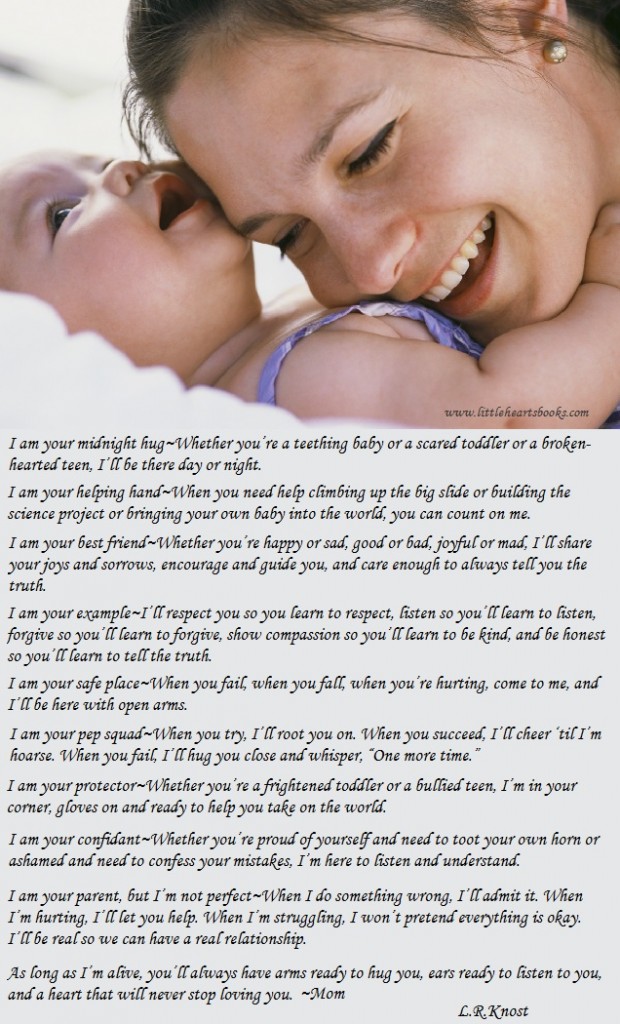
Related posts:
Backtalk is Communication…LISTEN
The Gift of a Strong-Willed Child
Bridge Over Troubled Waters~Parenting a ‘Problem’ Child
Two Thousand Connection Points a Day: Attachment Parenting Beyond Infancy
A Boy, A Girl, and A Baby~Journey to Gentle Parenting
 Award-winnning author, L.R.Knost, is the founder and director of the children's rights advocacy and family consulting group, Little Hearts/Gentle Parenting Resources, and Editor-in-Chief of Holistic Parenting Magazine. Books by L.R.Knost include Whispers Through Time: Communication Through the Ages and Stages of Childhood ; Two Thousand Kisses a Day: Gentle Parenting Through the Ages and Stages ; The Gentle Parent: Positive, Practical, Effective Discipline ; and Jesus, the Gentle Parent: Gentle Christian Parenting the first four books in the Little Hearts Handbook gentle parenting series, and children’s picture books Petey’s Listening Ears and the soon-to-be-released Grumpykins series.
Award-winnning author, L.R.Knost, is the founder and director of the children's rights advocacy and family consulting group, Little Hearts/Gentle Parenting Resources, and Editor-in-Chief of Holistic Parenting Magazine. Books by L.R.Knost include Whispers Through Time: Communication Through the Ages and Stages of Childhood ; Two Thousand Kisses a Day: Gentle Parenting Through the Ages and Stages ; The Gentle Parent: Positive, Practical, Effective Discipline ; and Jesus, the Gentle Parent: Gentle Christian Parenting the first four books in the Little Hearts Handbook gentle parenting series, and children’s picture books Petey’s Listening Ears and the soon-to-be-released Grumpykins series.
Death of a Butterfly: Helping Children Cope with Loss

[Reprinted from Two Thousand Kisses a Day: Gentle Parenting Through the Ages and Stages by L.R.Knost. Whispers Through Time: Communication Through the Ages and Stages of Childhood and The Gentle Parent: Positive, Practical, Effective Discipline also now available on Amazon and through other major retailers.]
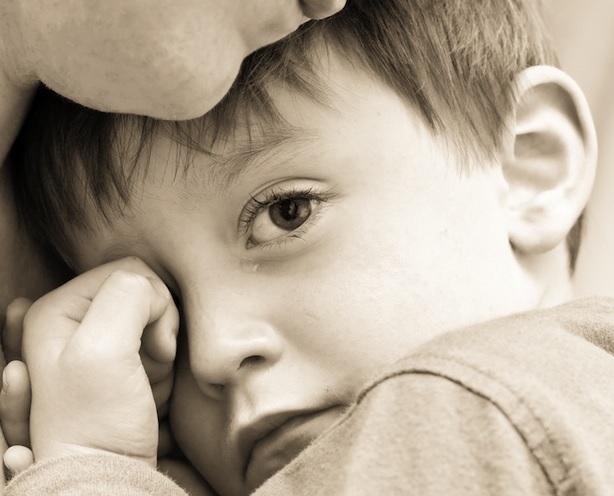 My little Funny Face accidentally killed a butterfly today. Her sweet little heart is broken, poor thing. We’re walking through the stages of mourning together as I use these small (to us adults) losses to equip her with healthy tools for handling the difficult things life will surely bring through the years, as it does to all of us. Whether it’s the death of a butterfly, the loss of a favorite stuffed animal, or another loss that matters to them deeply, guiding children through their uncomfortable and often overwhelming emotions is something parents are often unprepared to handle. Here are the steps we take together when life gets hard and loss becomes a reality to my children:
My little Funny Face accidentally killed a butterfly today. Her sweet little heart is broken, poor thing. We’re walking through the stages of mourning together as I use these small (to us adults) losses to equip her with healthy tools for handling the difficult things life will surely bring through the years, as it does to all of us. Whether it’s the death of a butterfly, the loss of a favorite stuffed animal, or another loss that matters to them deeply, guiding children through their uncomfortable and often overwhelming emotions is something parents are often unprepared to handle. Here are the steps we take together when life gets hard and loss becomes a reality to my children:
1.) Feeling~The first step is simply allowing my children to feel their emotions. If they’re crying, I listen to their cues to know when to offer hugs or if they need some time alone or just someone to sit quietly next to them. If they’re angry, I watch closely to see if they need some directions for a safe outlet such as punching a pillow or going outside to kick a ball or if they are able to just stomp around and get it out that way. If they are unnaturally quiet, I let them know I’m there if they need me and then I leave them alone to sort through their emotions in their own time.
2.) Expressing~The second step is guiding my children to express their feelings in some tangible form. This step begins either when they initiate a conversation about the loss or when I see that their emotions are getting the best of them, indicating that they need some assistance in moving forward. This step may take the form of simply talking through what they are feeling, but typically it includes drawing a picture, making up a song or dictating a poem for me to write down for them, making a memory box, or some combination of each of them.
3.) Refocusing~The third and last step is giving my children ideas about how to move on. It’s often hard for them to figure out how to redirect their thoughts from constantly swirling around their loss. It takes a measure of mental maturity to be able to focus elsewhere when emotions are running high. This is not to say that they should never think about their loss again. I am always open to listening to their feelings and sharing their memories with them. This last step is just gently helping them to consciously shift their attention from what they have lost to what they still have, moving their thoughts from loss to life. This step often takes the form of encouraging them to head outside and play in the mud or climb a tree, or it might be offering to read them a favorite book or play a board game with them or maybe inviting a friend over to play.
While these three steps are in no way exhaustive, the idea behind this process is to simplify the stages of grief in a way that is accessible to parents and understandable to children. And then, when life hits hard and big losses occur such as the loss of a loved one, divorcing parents, etc. having walked through these small losses with our children sets the stage for helping them to work through the harder things while preserving a healthy parent/child connection.
When big life losses do occur, staying in tune with our children and letting them ask questions freely while we work to temper our answers in age appropriate terms is vital. Watching for changes in their behavior helps to give us clues as to what they’re feeling. If they start having trouble sleeping or resisting going to school or having meltdowns, etc. it might be helpful to seek out professional counseling for a brief time. We also need to keep in mind that small children have active imaginations and the line between fantasy and reality is very blurry for them. Death may not impact them much at all if the reality of it doesn’t sink in, or, on the flip side it could have a significant impact and they could begin to imagine all sorts of awful things happening to them or their family or friends. It’s important to let our children lead the way as to how we need to help them cope. Our local library or online at Goodreads or Amazon’s Listopia can also be good resources for age appropriate books on death and grief to share with our children. We do need to be sure to read through them ourselves first to make sure we’re comfortable with how things are presented, though.
Here is a brief, generic ‘script’ that can be used as a starting point for sharing difficult news about a loss with our children:
“I have something to tell you, and it’s a very hard thing. I want you to know that you are safe, and I’m safe, and I’m right here to help you, okay?”
(Give them time to respond.)
“Your (grandpa, aunt, friend, etc.), *name,* died. Do you know what ‘died’ means?”
(Give them time to respond.)
“It means they’re gone to (fill in your belief), and they won’t be coming back.”
(Give them time to respond.)
“It’s okay to be sad or even angry or scared. Those are normal emotions when people die. We are all very sad because we’re going to miss *name.*”
(Give them time to respond.)
“You’ll probably need some time to think about what happened, and you’ll probably have questions. That’s okay. And it’s okay to talk about *name,* too. We all are going to miss *name* and talking about them can help us to remember happy times with them.”
(Give them time to respond.)
“Would you like to make a goodbye card or a memory box? That might help you to feel better.”
Obviously this is a generic script that will need to be adapted based on a child’s responses, but it provides a starting point to open the conversation and begin to walk them through the grieving and healing process. Time does heal, but often it isn’t simply the passage of time that heals, but rather the support and comfort from those with whom we spend that time.
Related posts:
Children in the three to six-year-old age range are beginning to realize that their parents aren’t the all-powerful beings that they once believed them to be. This realization can be very uncomfortable for them, causing them a great deal of unease as they are concurrently beginning to realize that there is a whole, big, wide world beyond their safe, little home, a that the world is full of potential dangers, hazards unknown, and just a lot of really big, scary things. So what is a parent to do with their newly timid little house-mouse? The Age of Fear~Young Children and Anxiety
 Award-winnning author, L.R.Knost, is the founder and director of the children's rights advocacy and family consulting group, Little Hearts/Gentle Parenting Resources, and Editor-in-Chief of Holistic Parenting Magazine. Books by L.R.Knost include Whispers Through Time: Communication Through the Ages and Stages of Childhood ; Two Thousand Kisses a Day: Gentle Parenting Through the Ages and Stages ; The Gentle Parent: Positive, Practical, Effective Discipline ; and Jesus, the Gentle Parent: Gentle Christian Parenting the first four books in the Little Hearts Handbook gentle parenting series, and children’s picture books Petey’s Listening Ears and the soon-to-be-released Grumpykins series.
Award-winnning author, L.R.Knost, is the founder and director of the children's rights advocacy and family consulting group, Little Hearts/Gentle Parenting Resources, and Editor-in-Chief of Holistic Parenting Magazine. Books by L.R.Knost include Whispers Through Time: Communication Through the Ages and Stages of Childhood ; Two Thousand Kisses a Day: Gentle Parenting Through the Ages and Stages ; The Gentle Parent: Positive, Practical, Effective Discipline ; and Jesus, the Gentle Parent: Gentle Christian Parenting the first four books in the Little Hearts Handbook gentle parenting series, and children’s picture books Petey’s Listening Ears and the soon-to-be-released Grumpykins series.

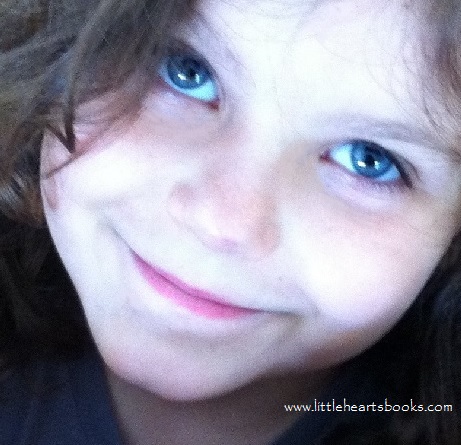 “Bedtime. Go grab your toothbrush from the suitcase, okay?”
“Bedtime. Go grab your toothbrush from the suitcase, okay?” legends, clichés and adages, and weaving them into unique or humorous settings.
legends, clichés and adages, and weaving them into unique or humorous settings. [Reprinted from
[Reprinted from  From kicking and rolling and stretching to being lulled to sleep by the rhythmic cadence of a mama’s heartbeat, little ones spend the first months of their existence wrapped in a warm, dark, gently swaying cocoon, a life-giving embrace, the ultimate hug, readying themselves for their grand entrance to the world.
From kicking and rolling and stretching to being lulled to sleep by the rhythmic cadence of a mama’s heartbeat, little ones spend the first months of their existence wrapped in a warm, dark, gently swaying cocoon, a life-giving embrace, the ultimate hug, readying themselves for their grand entrance to the world.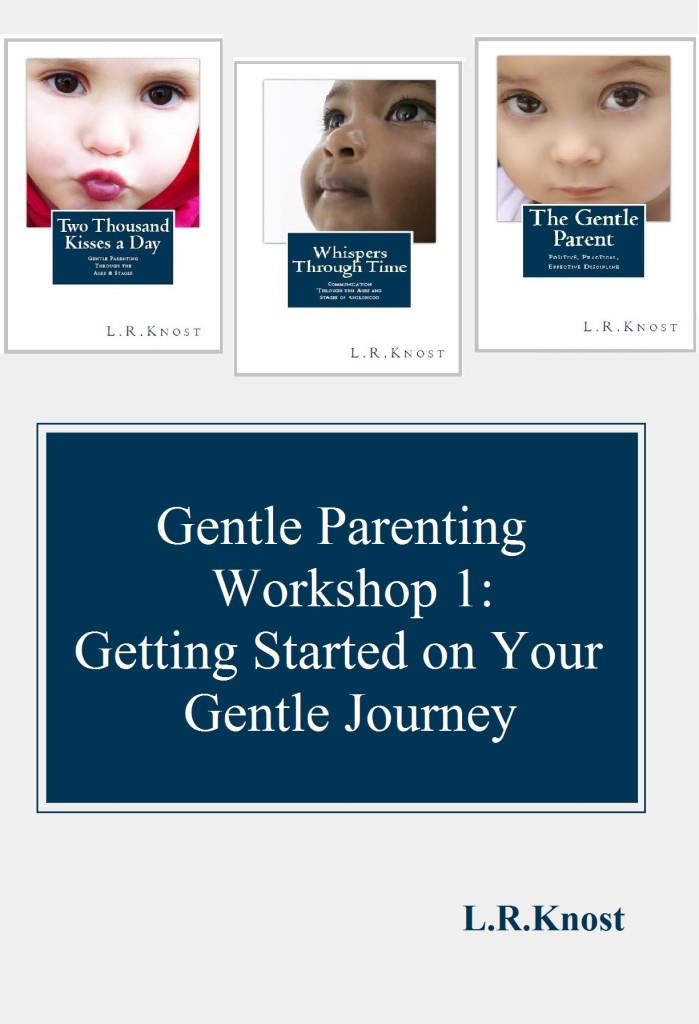
 “She won’t share!”
“She won’t share!” 